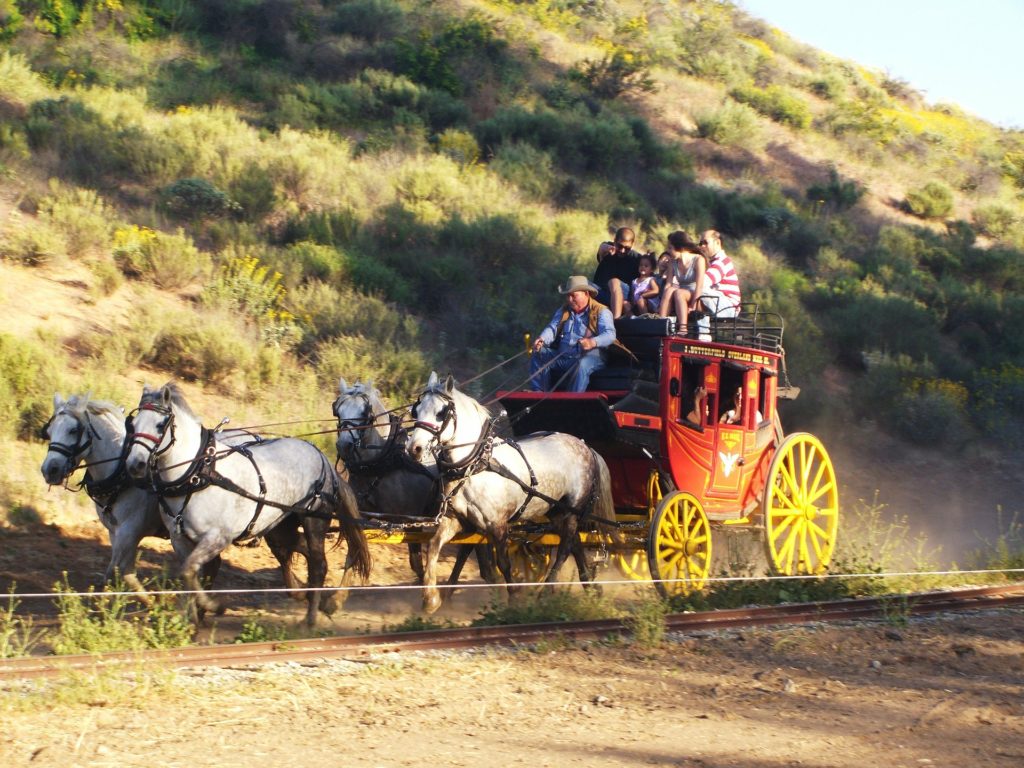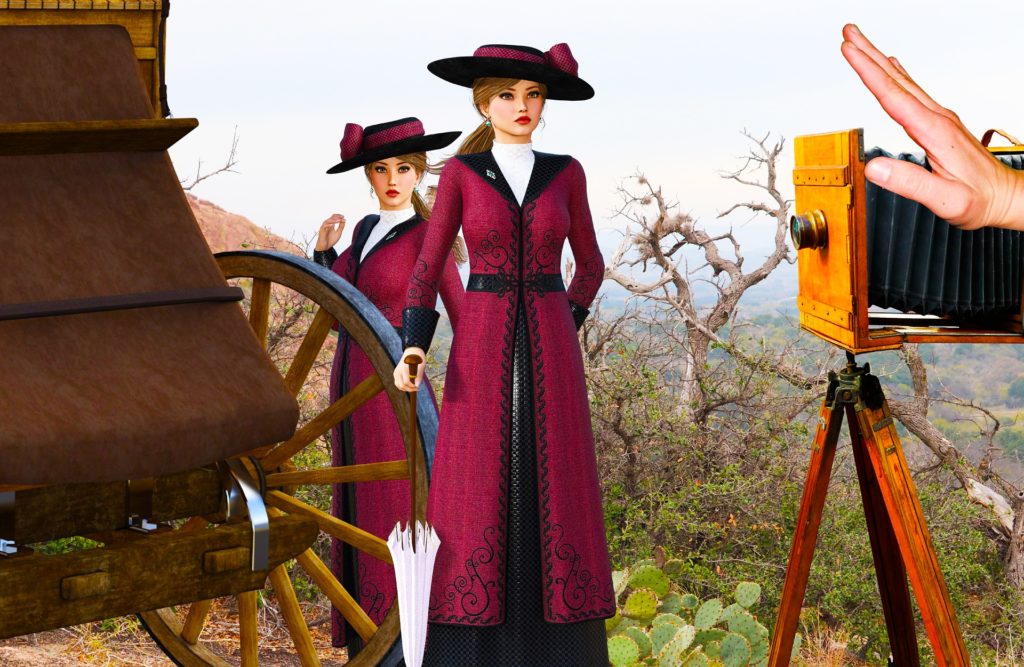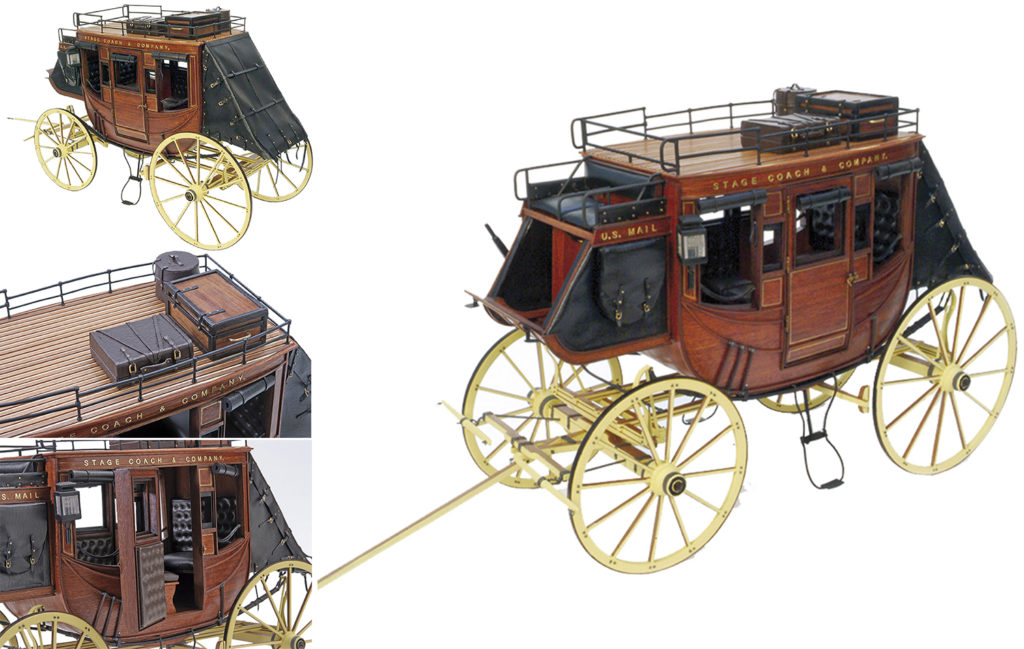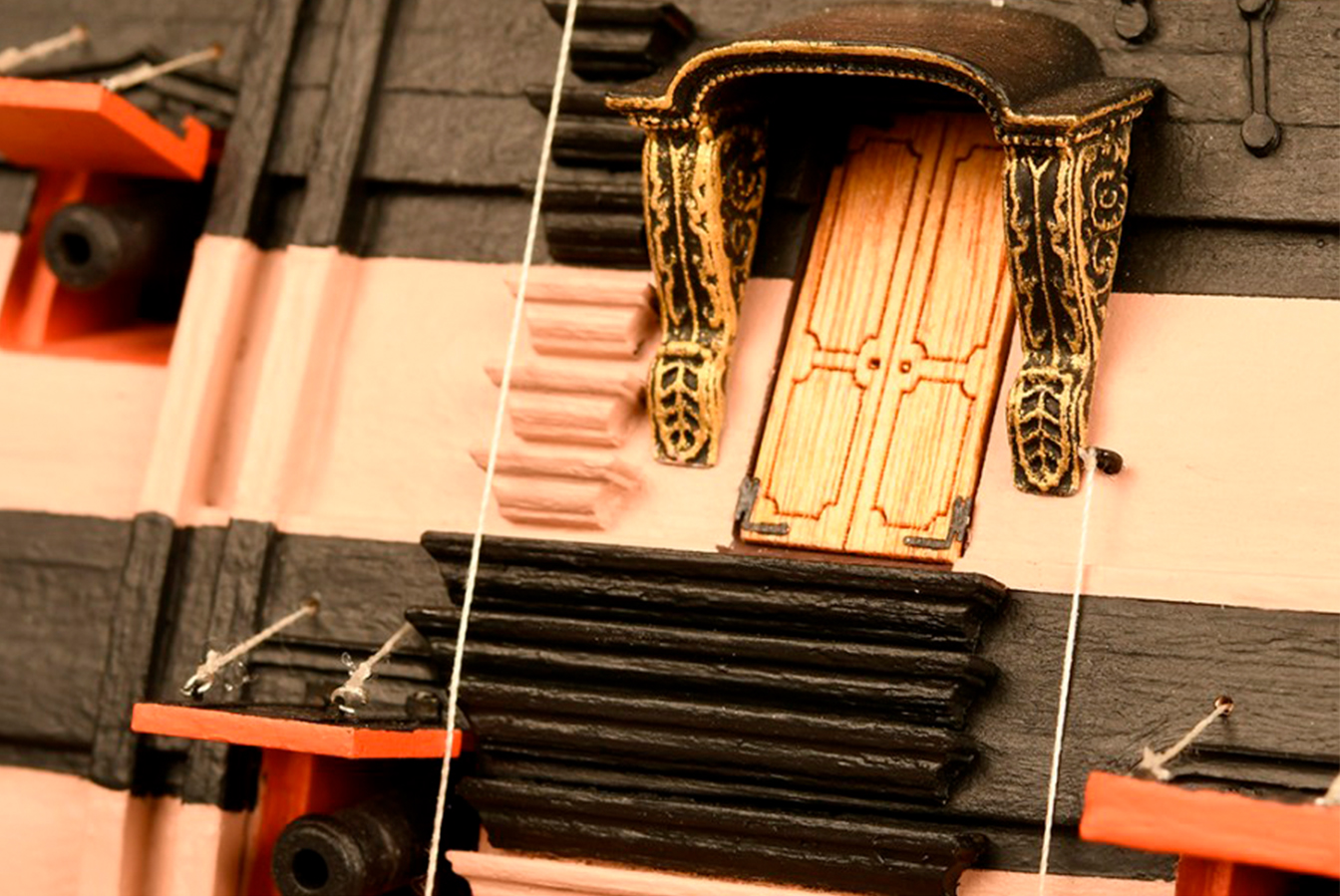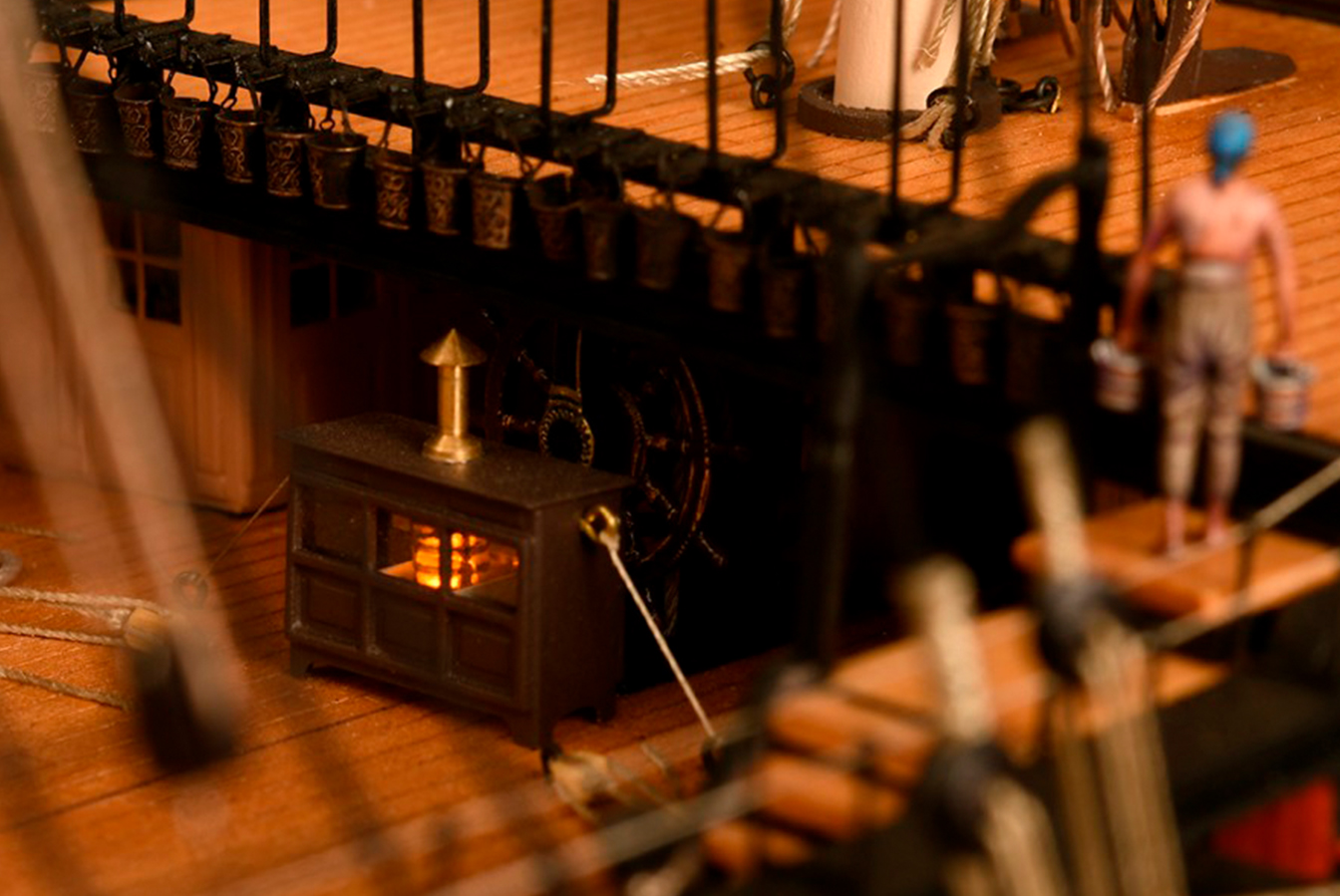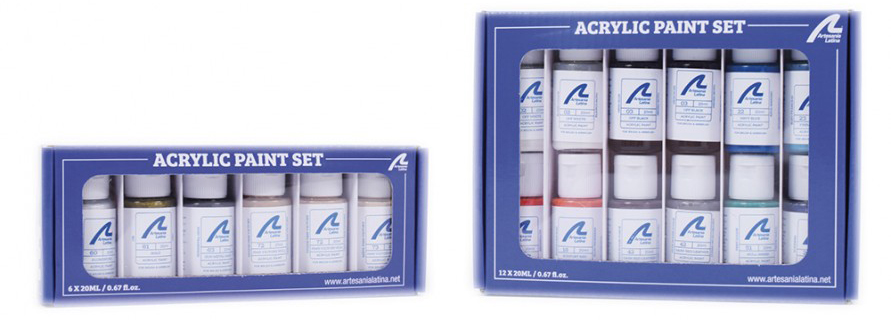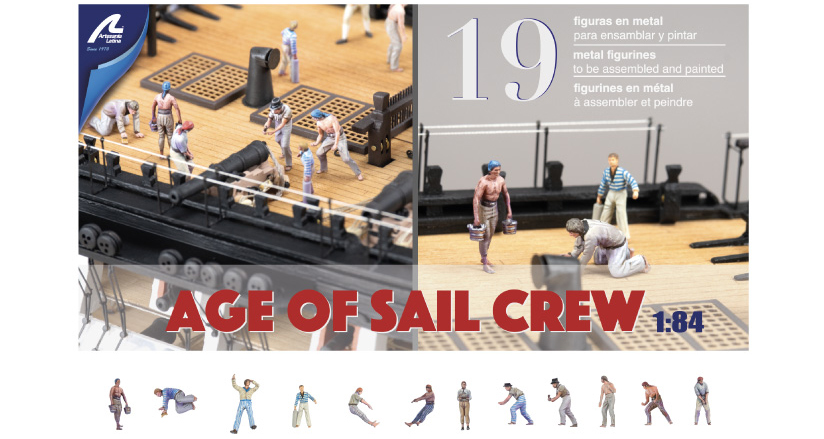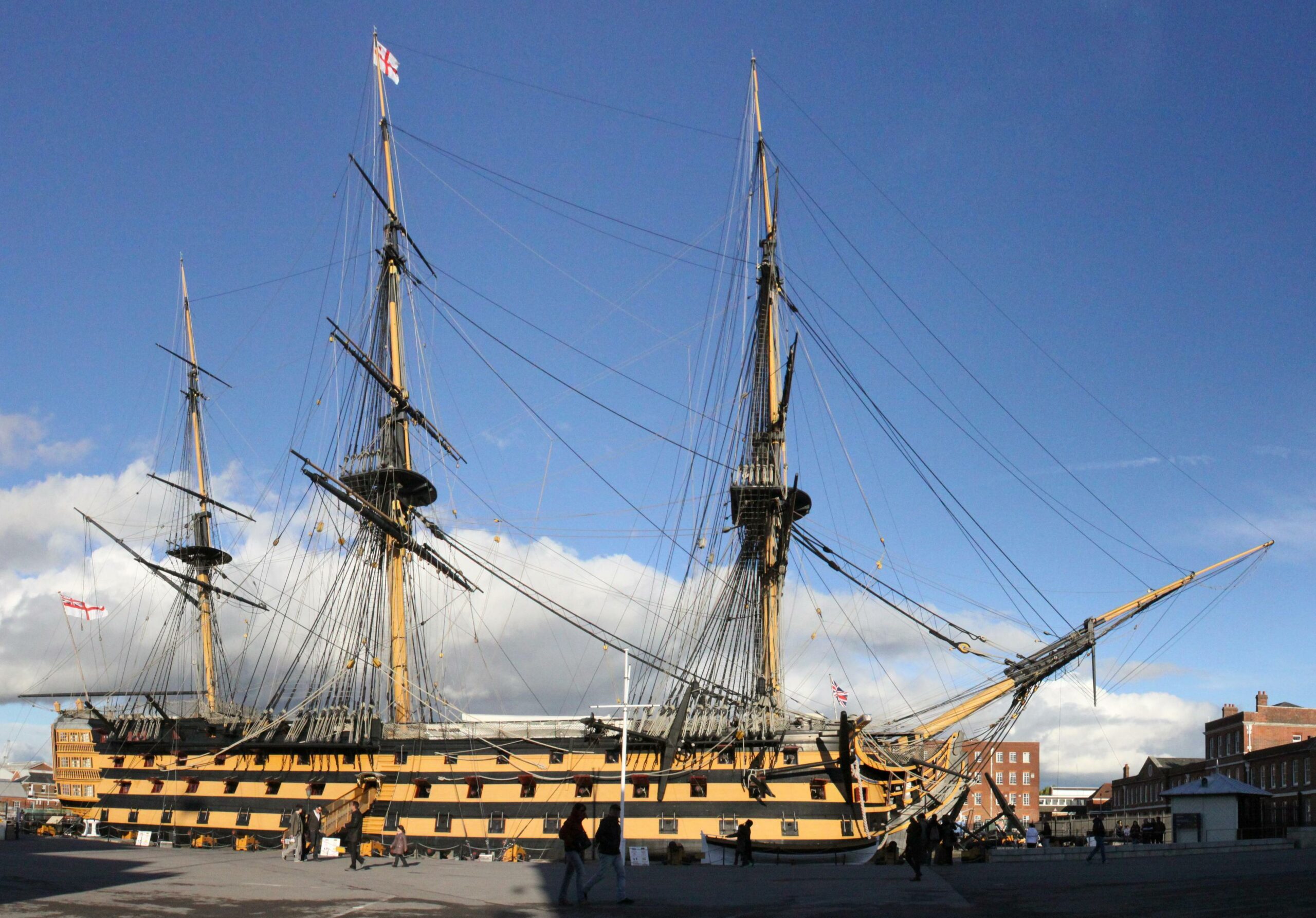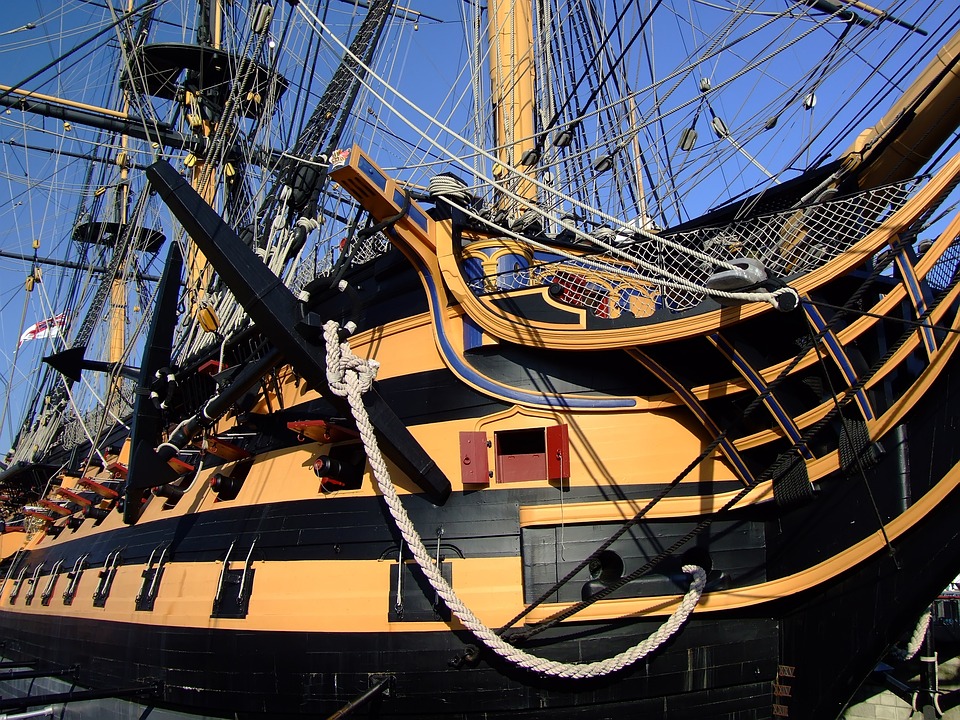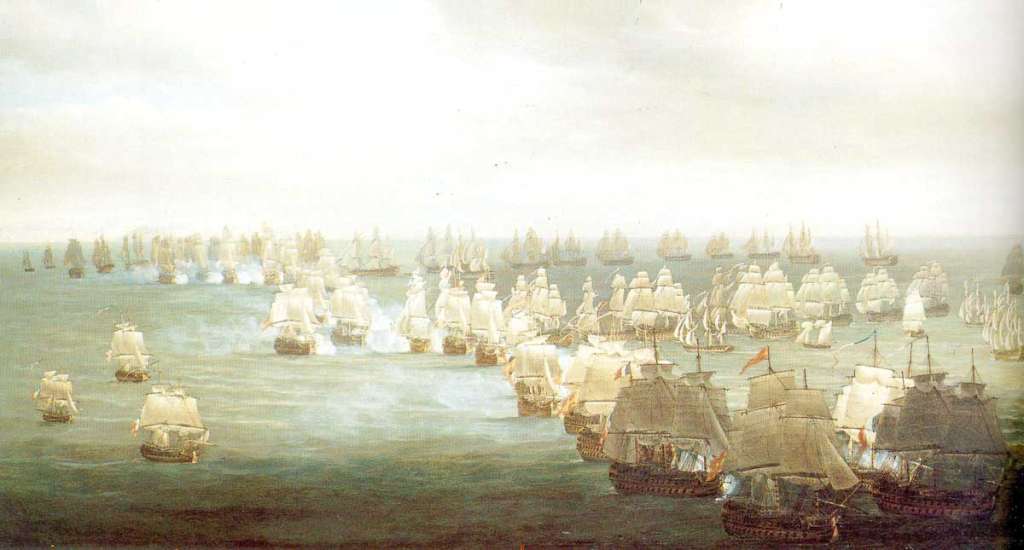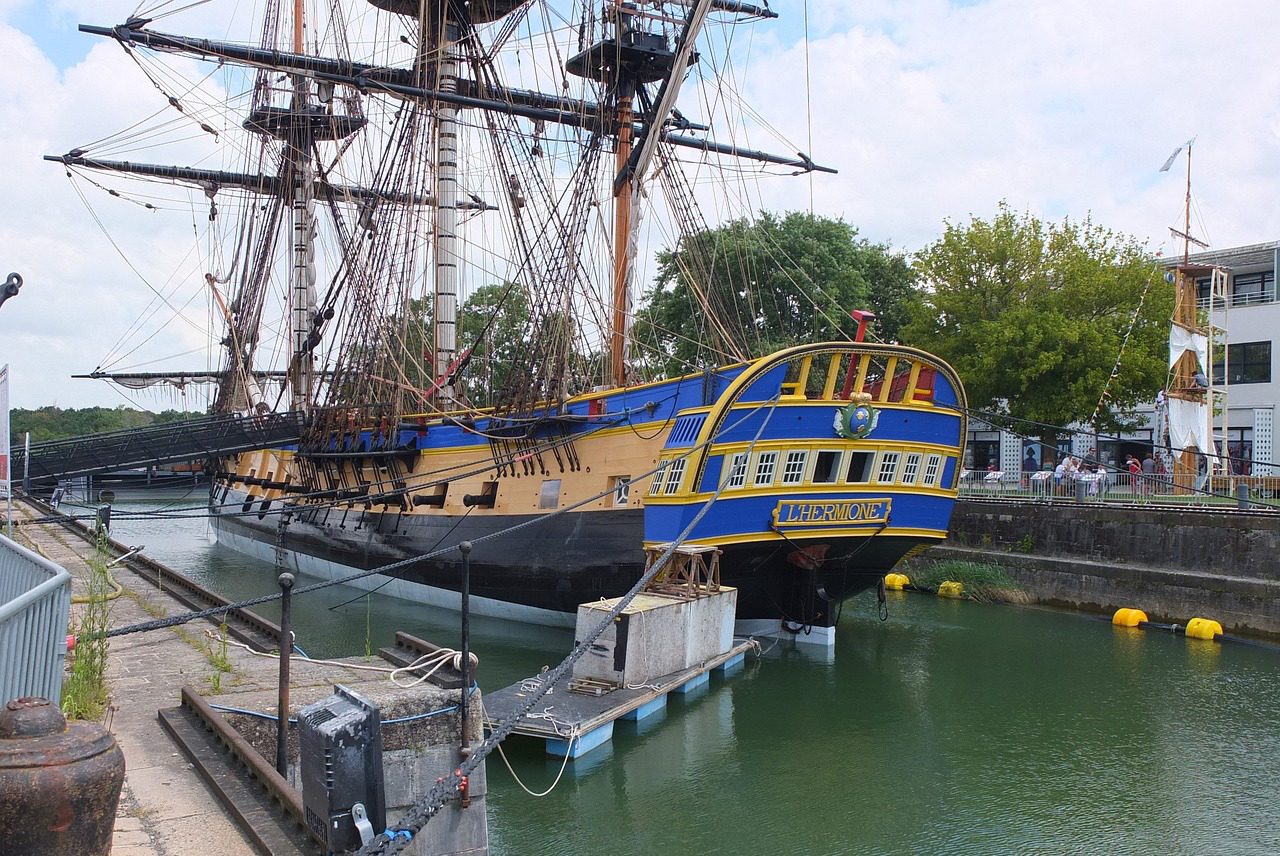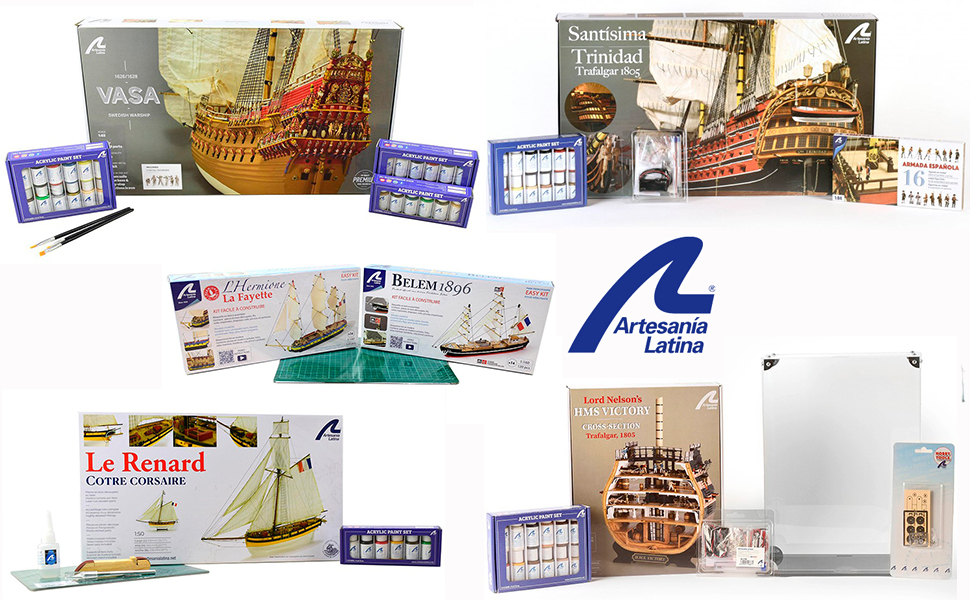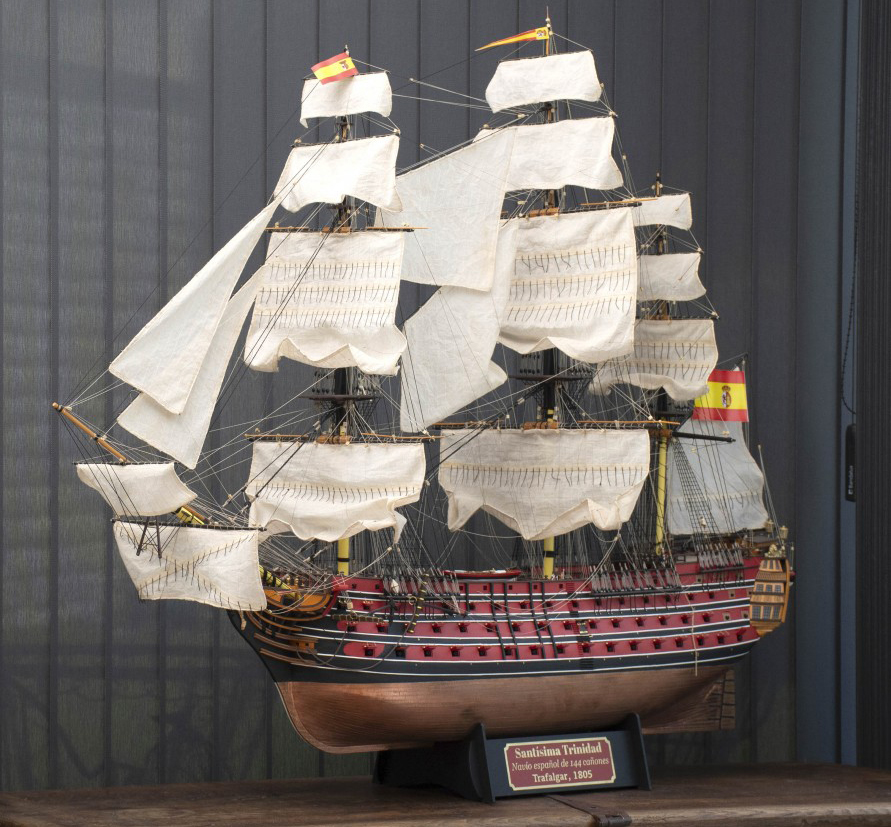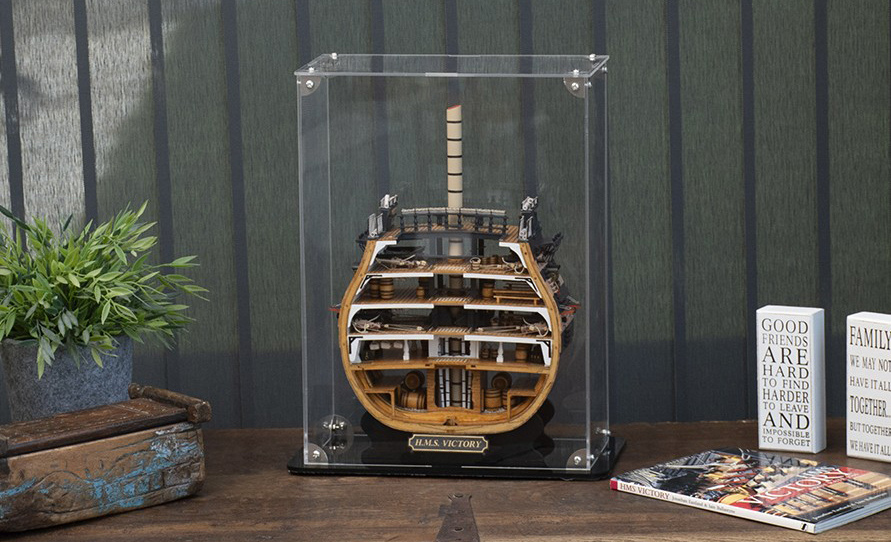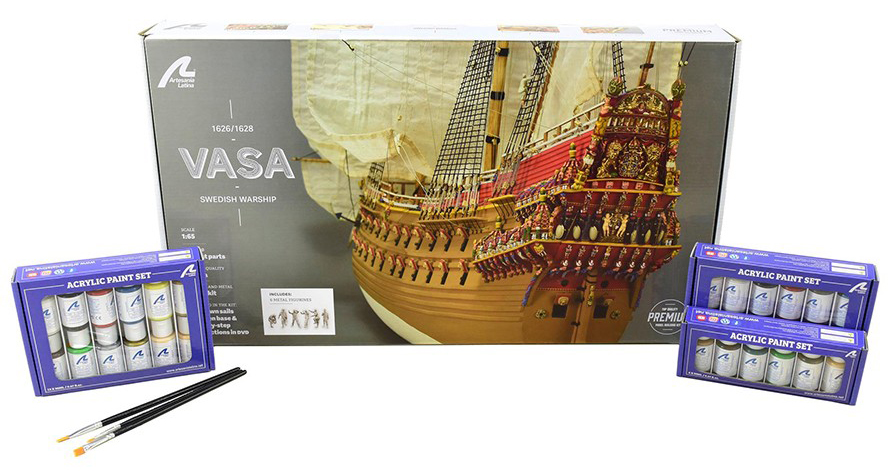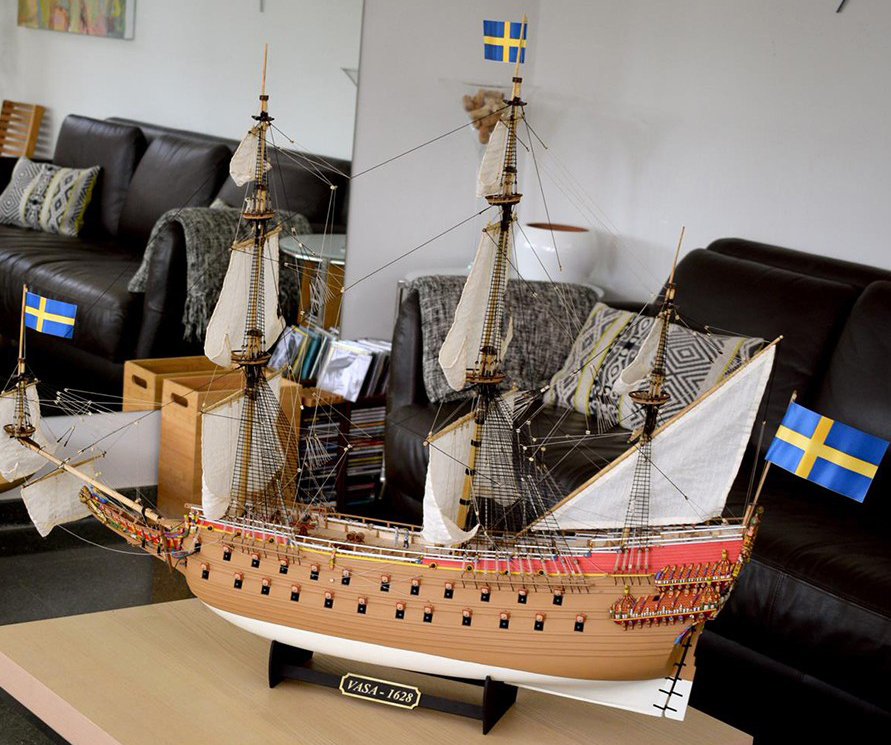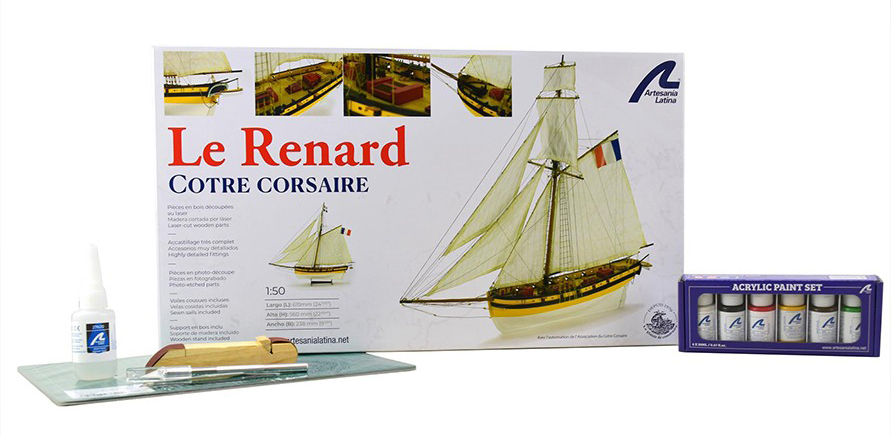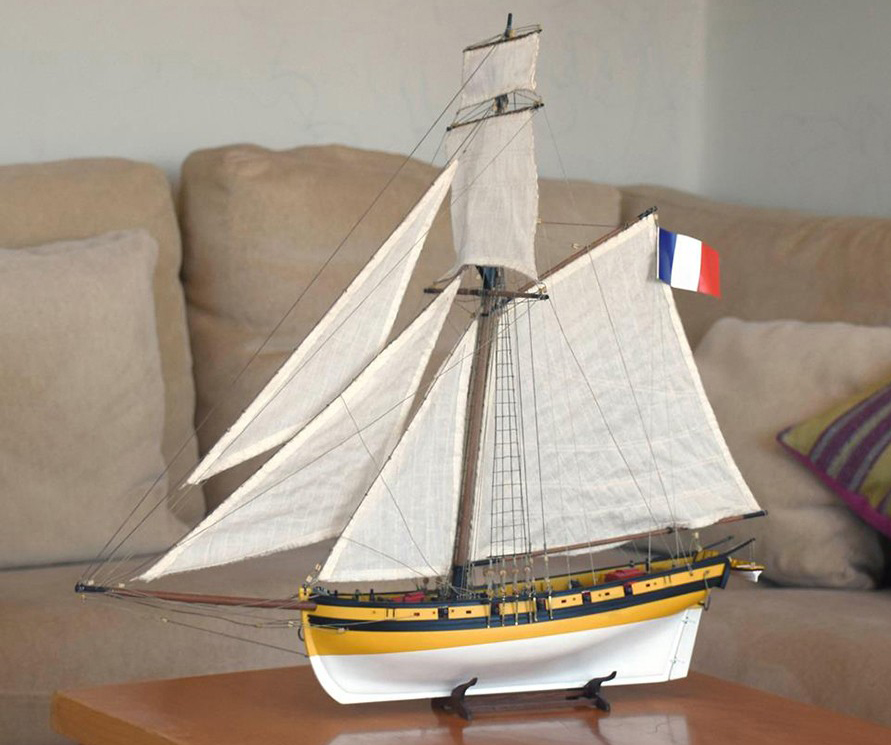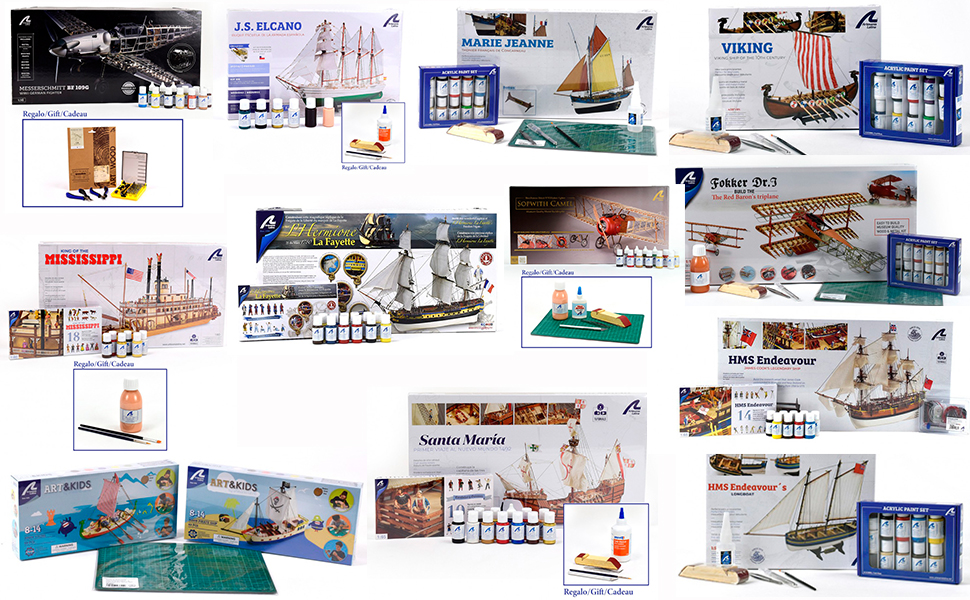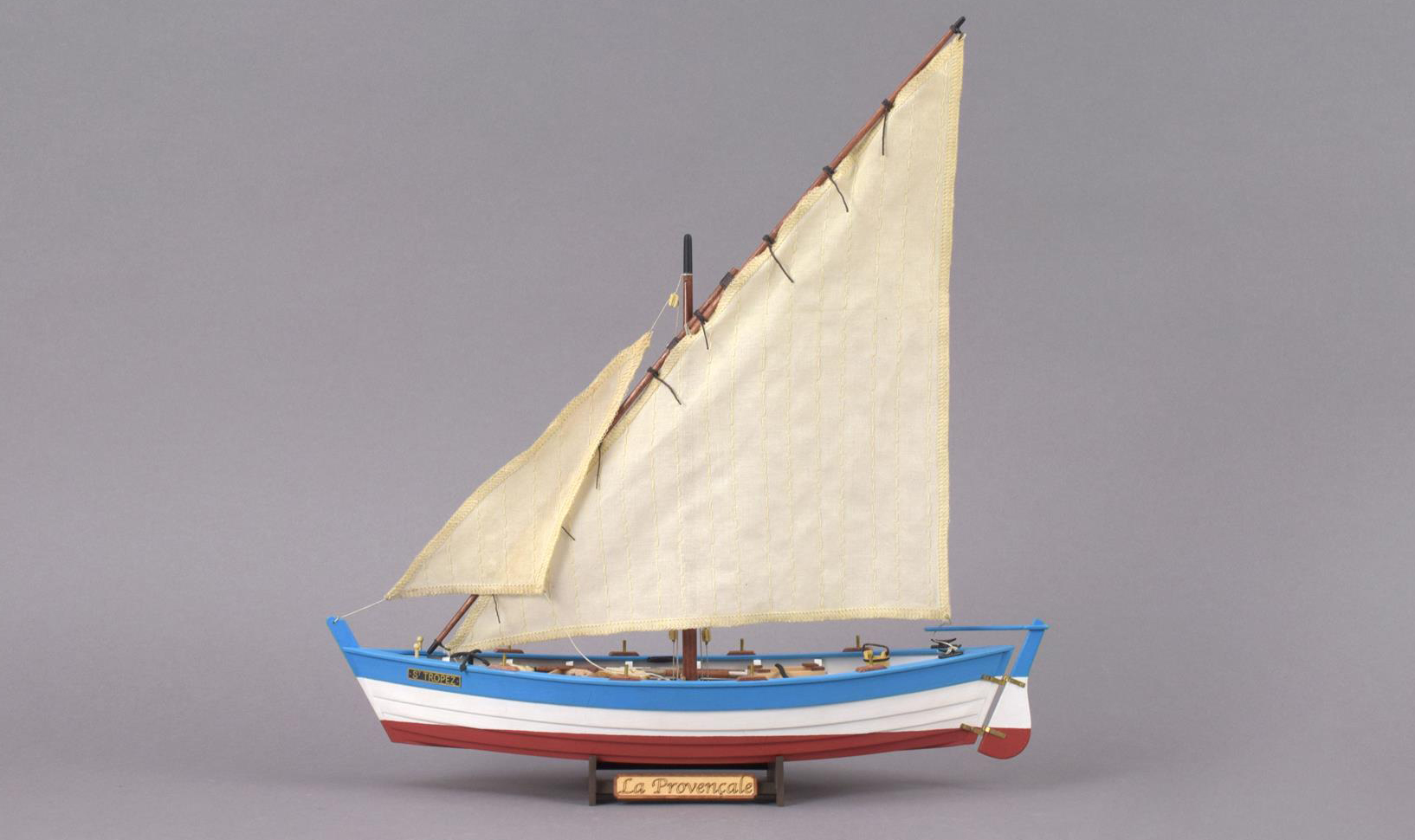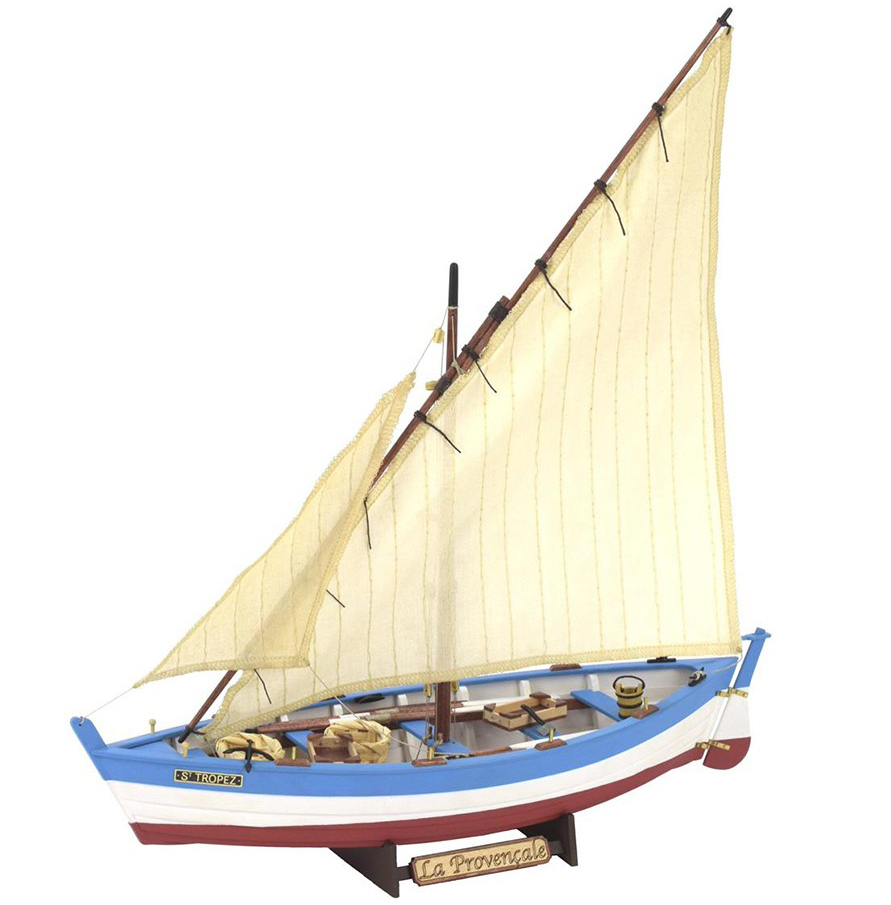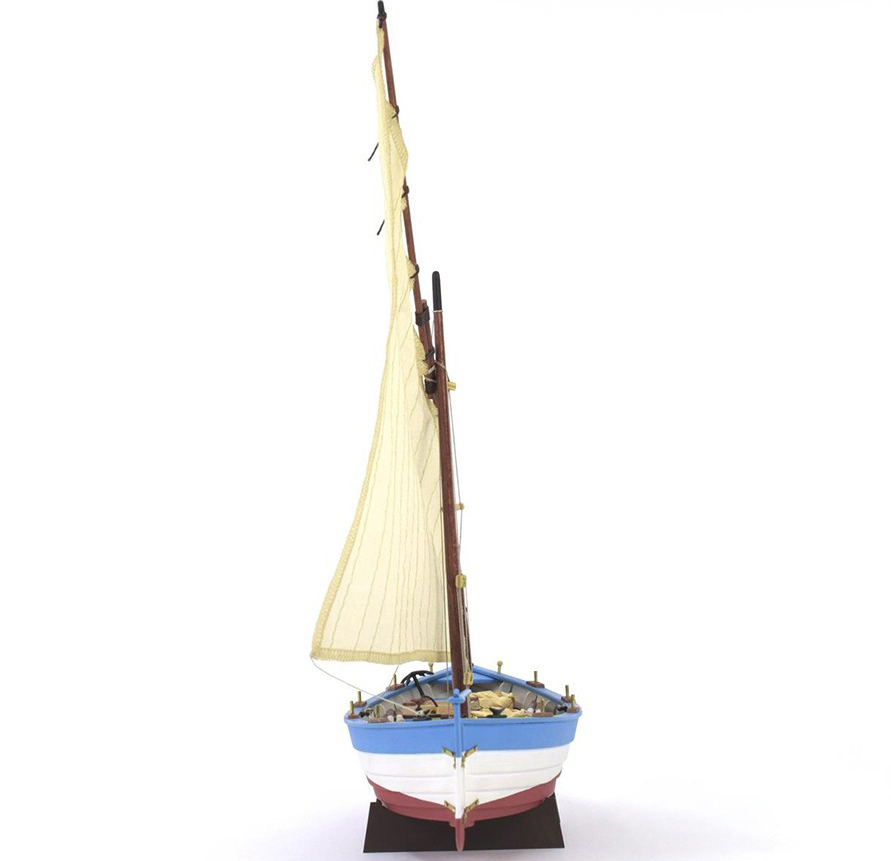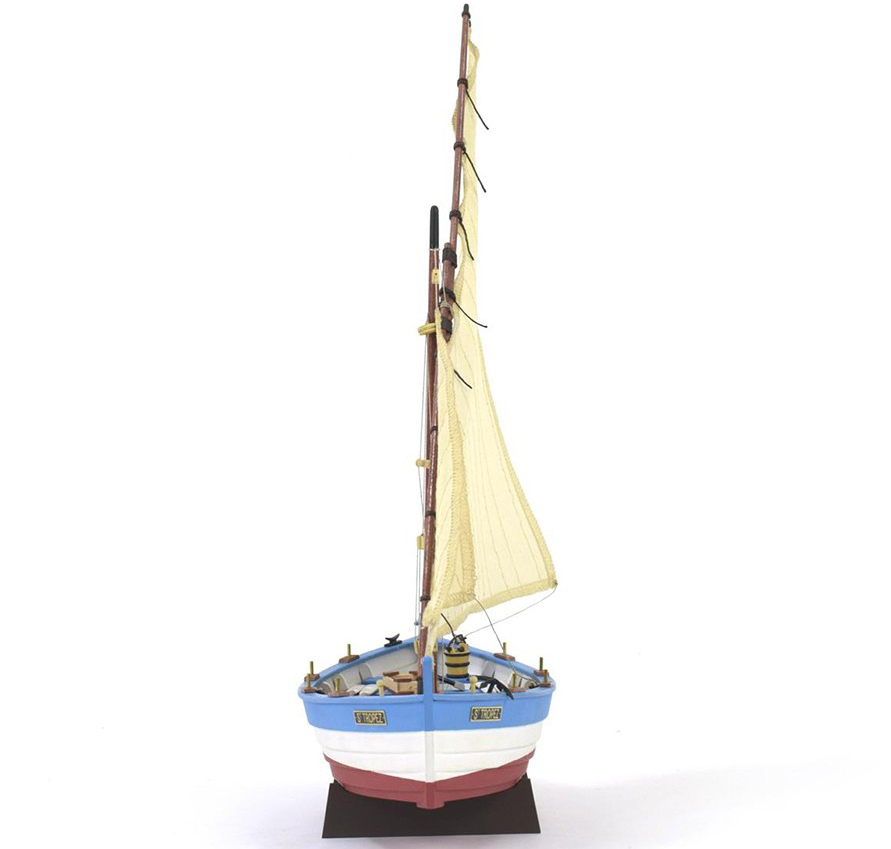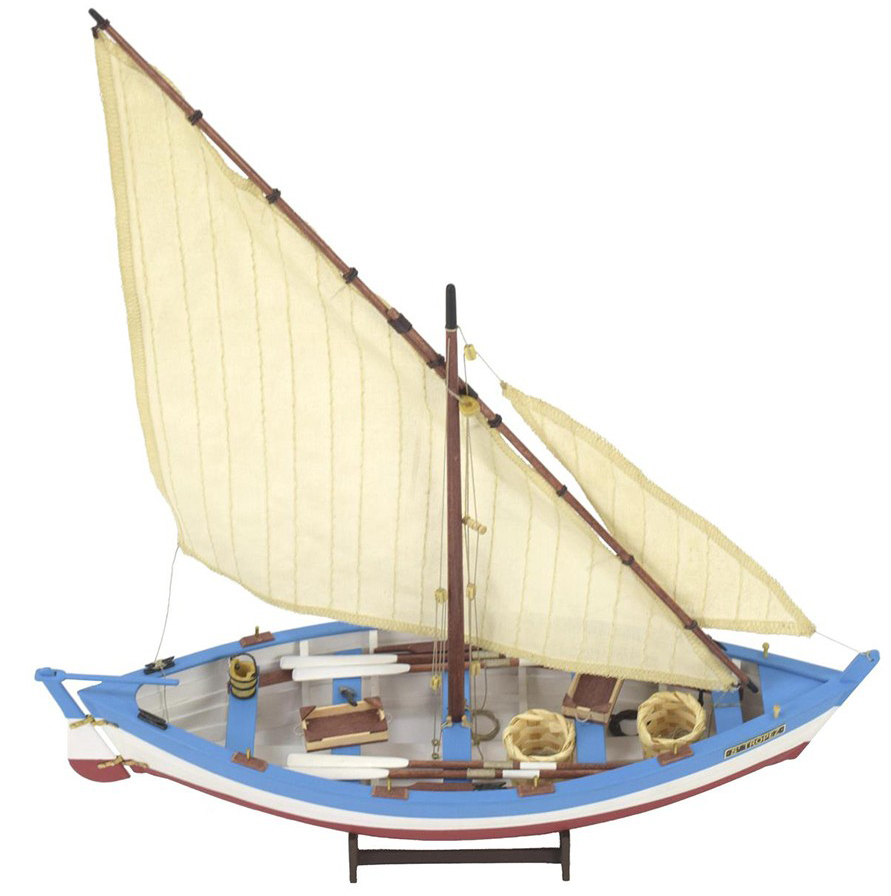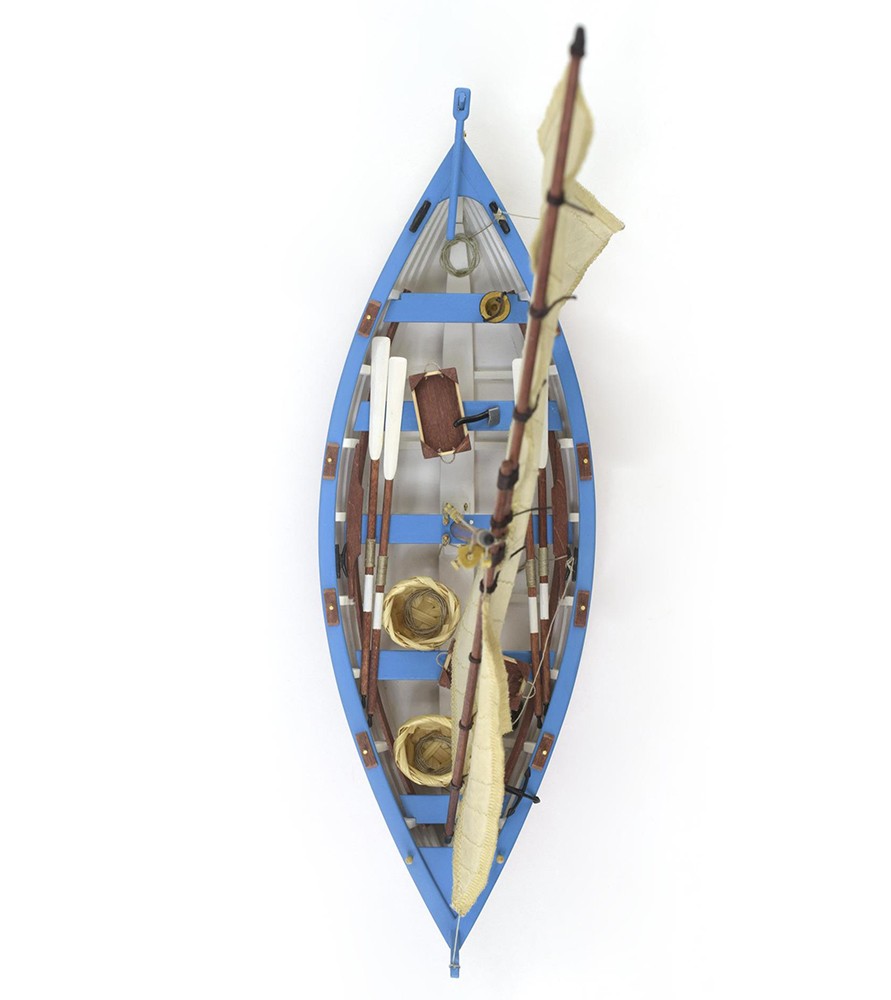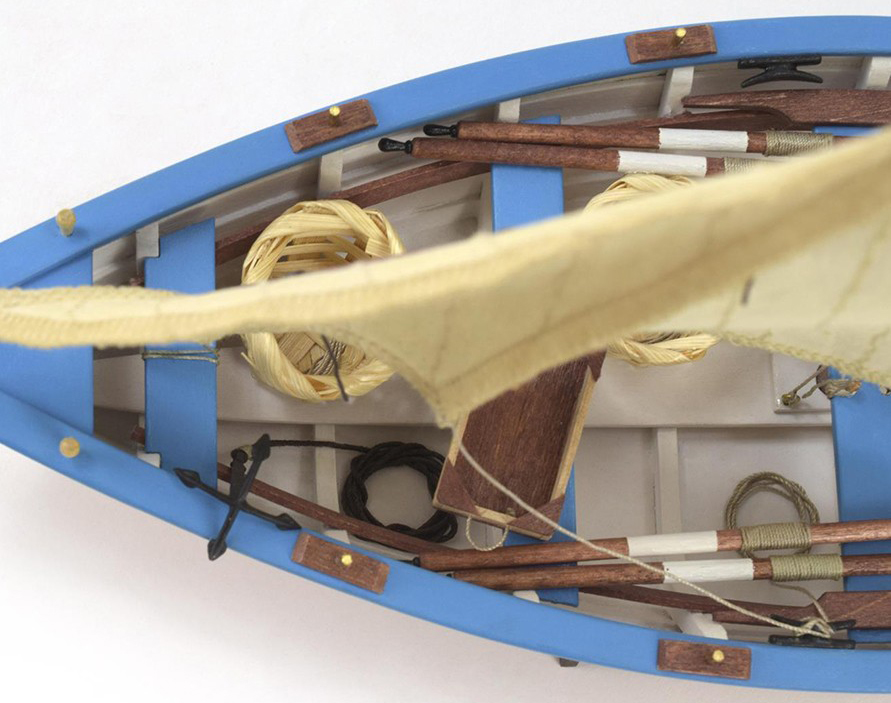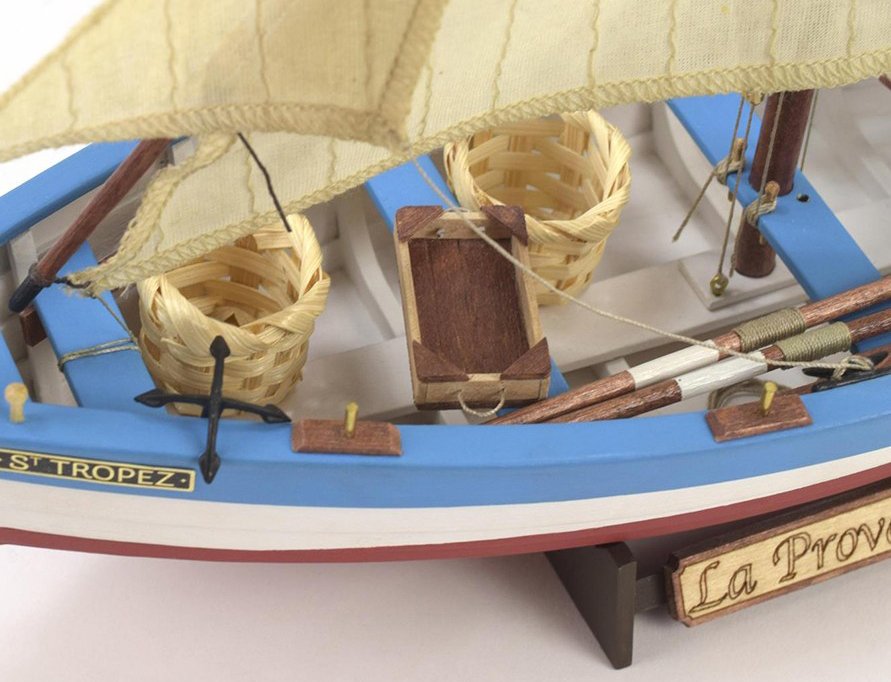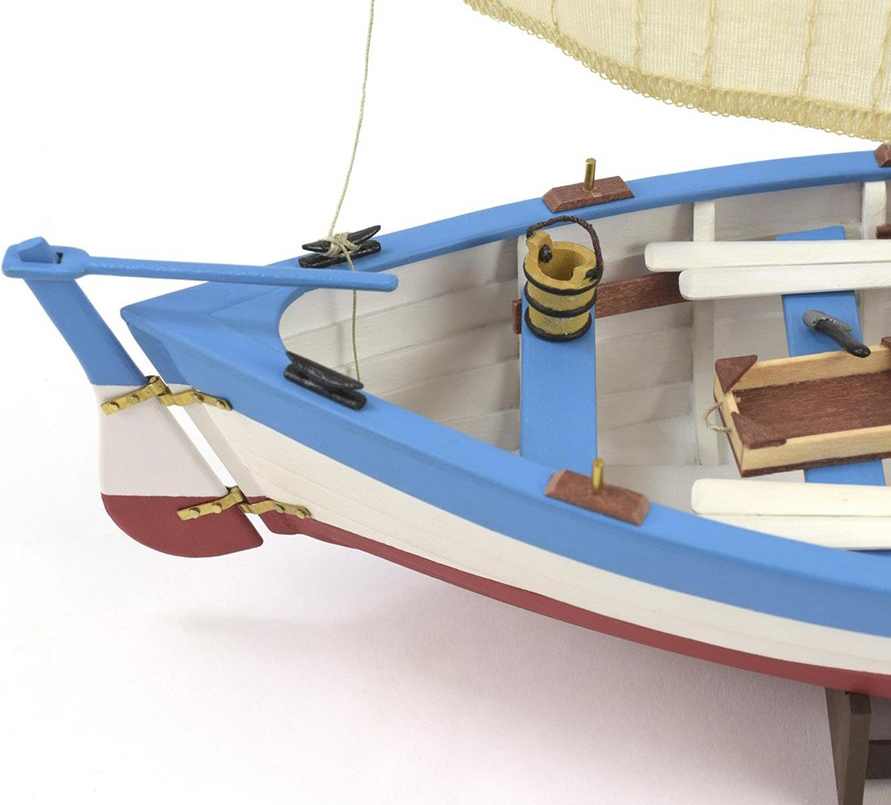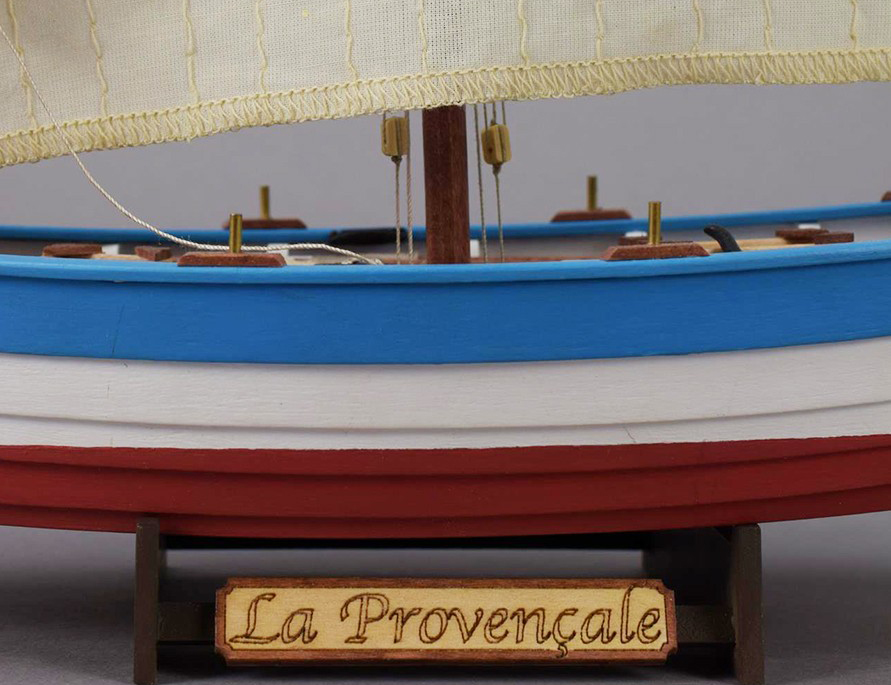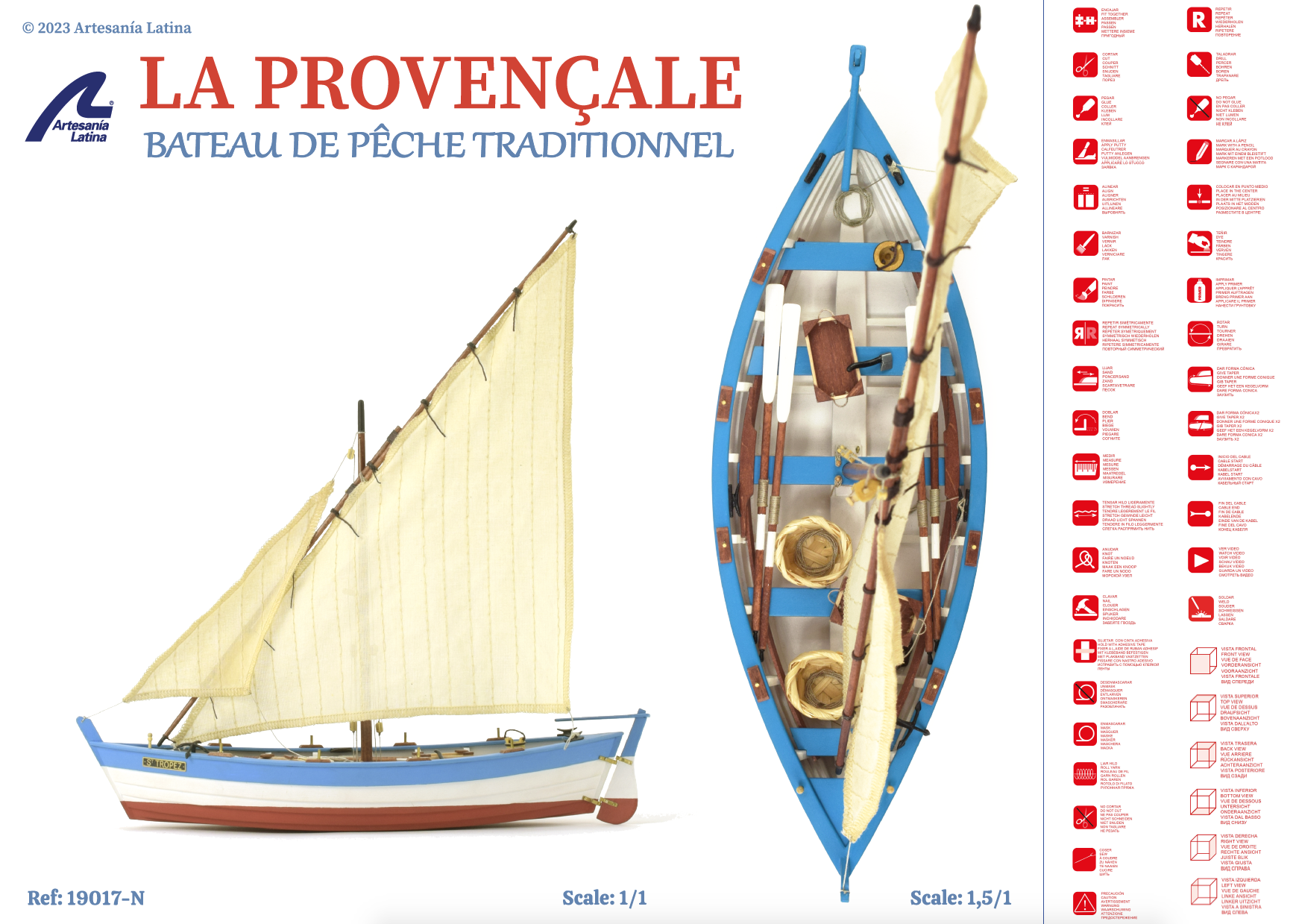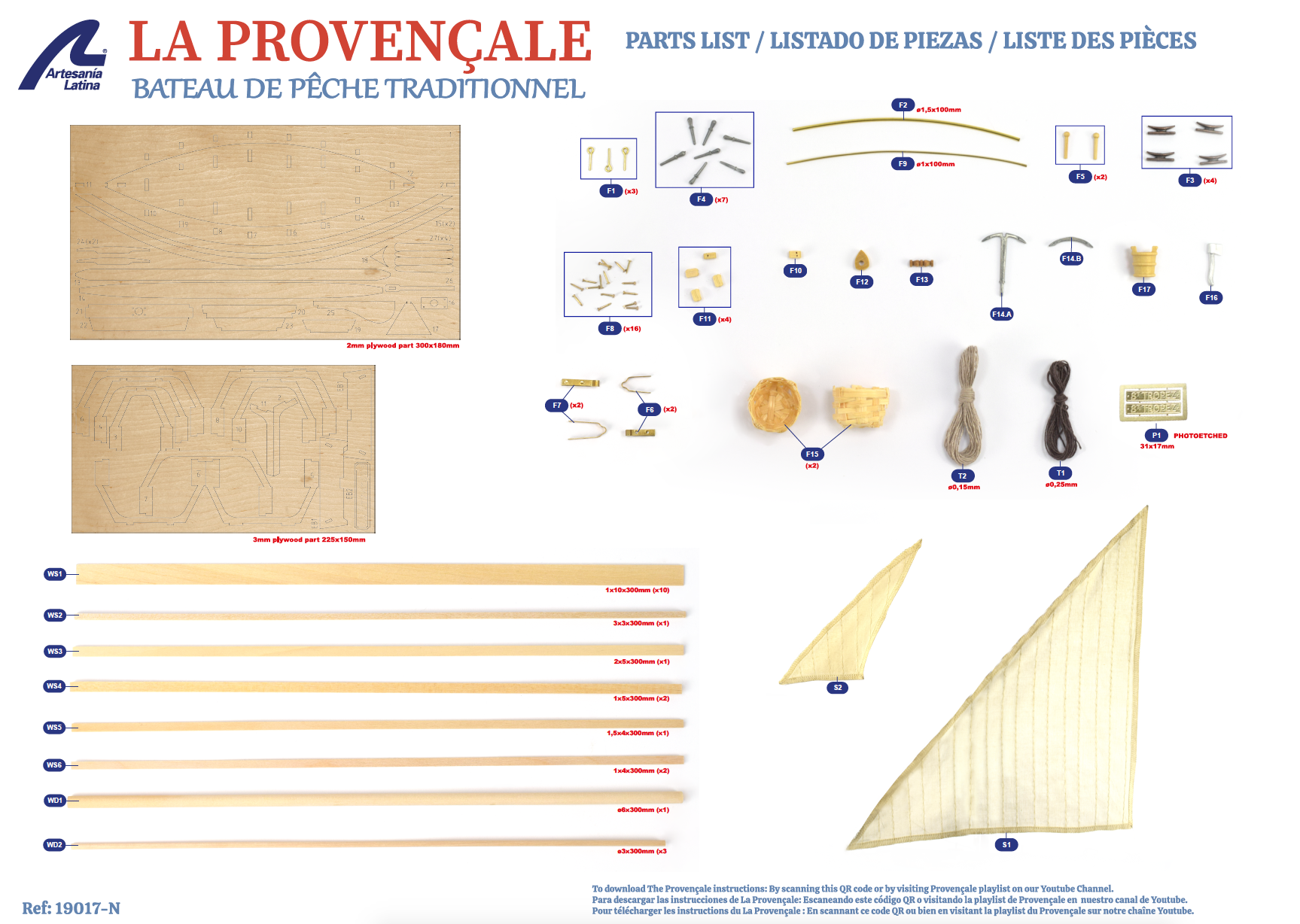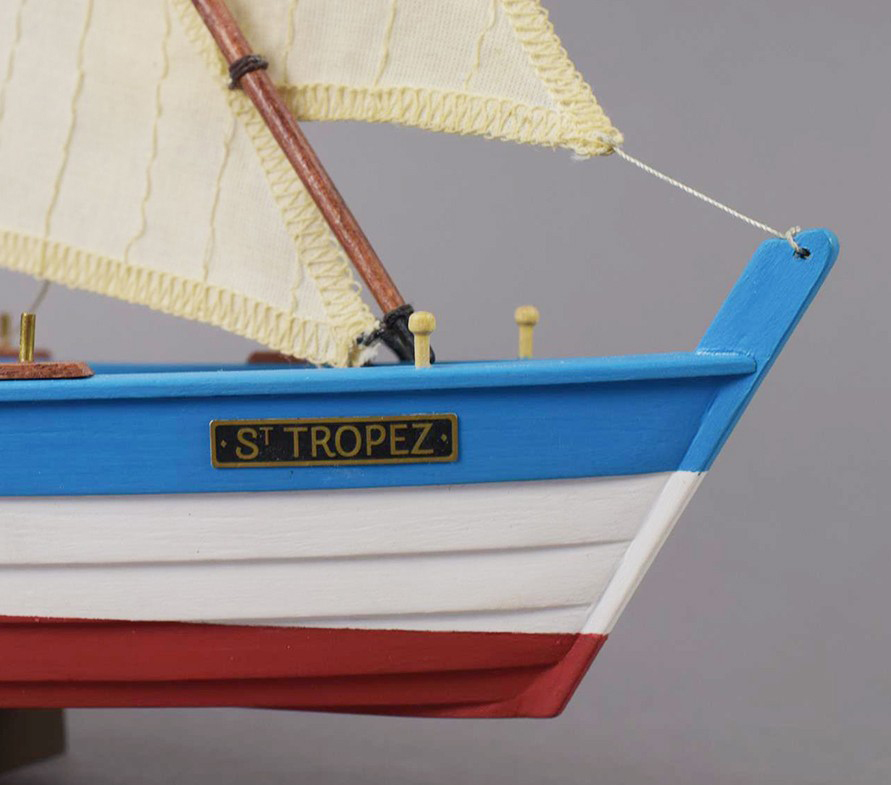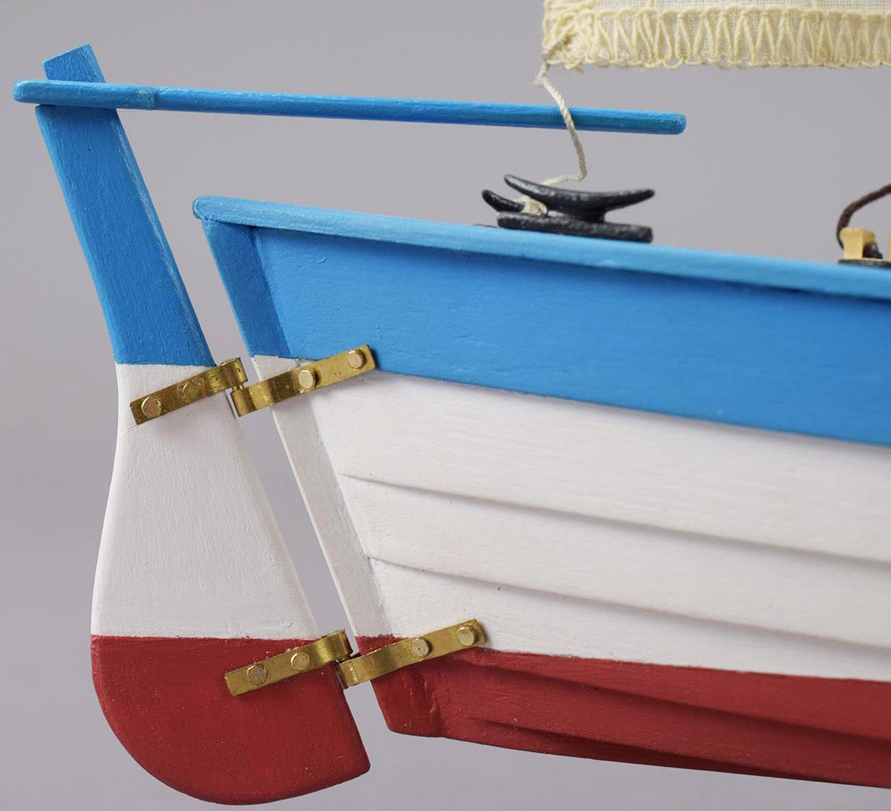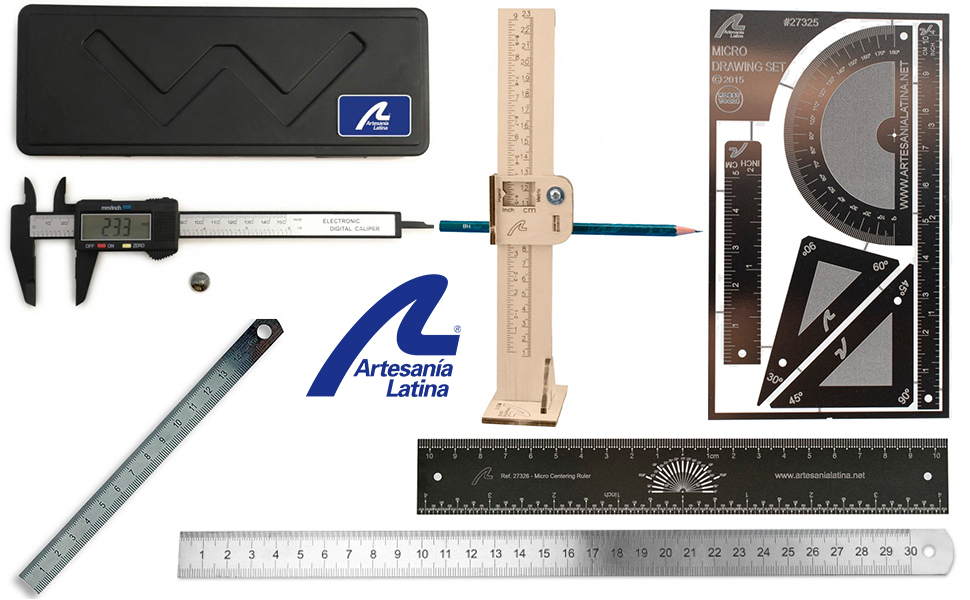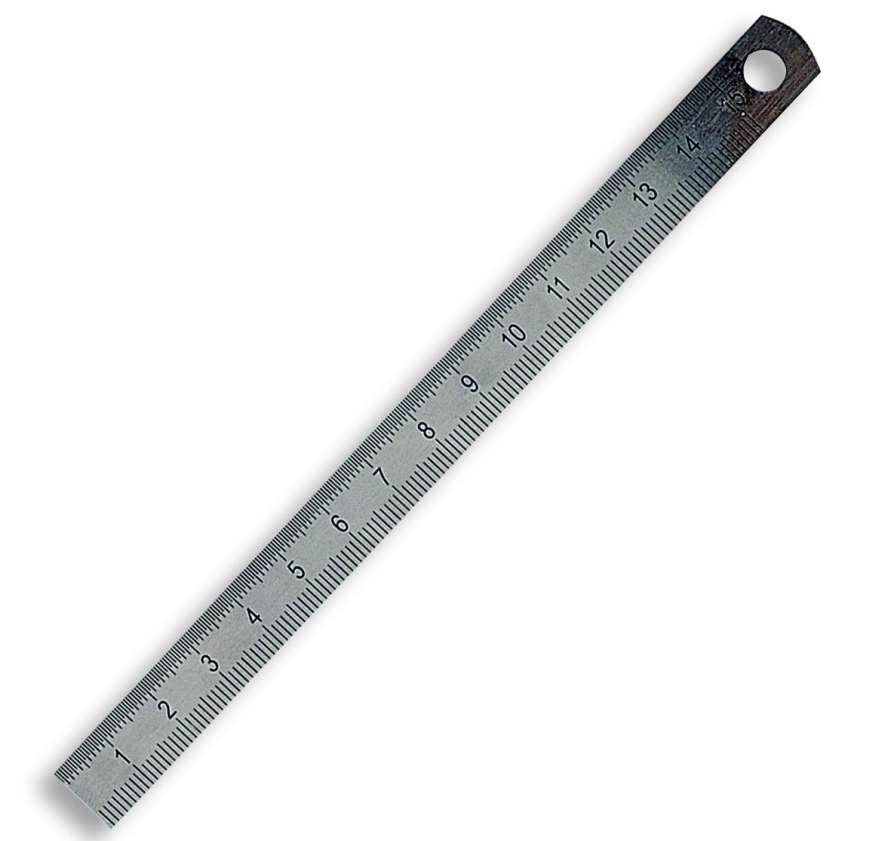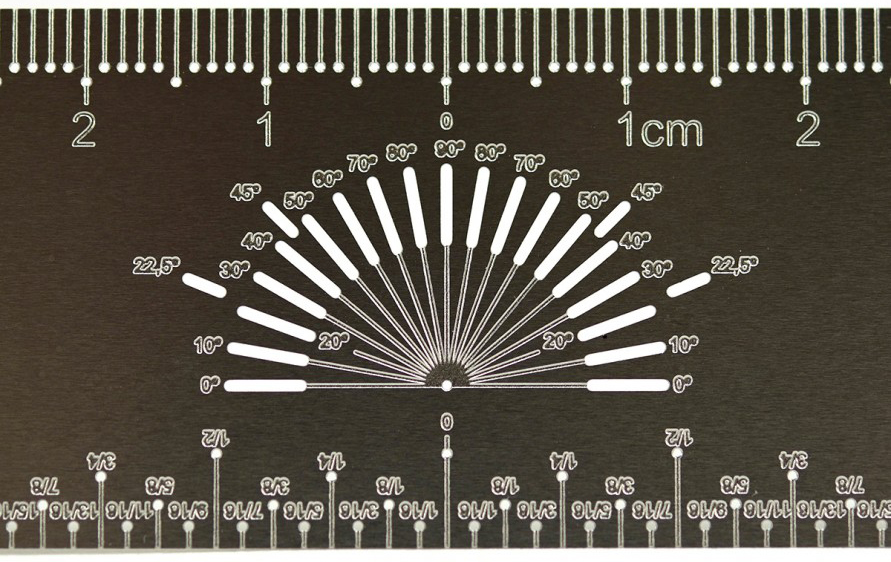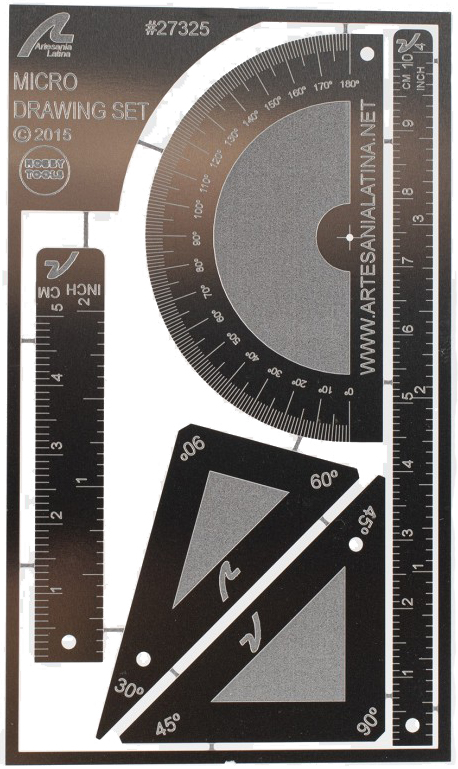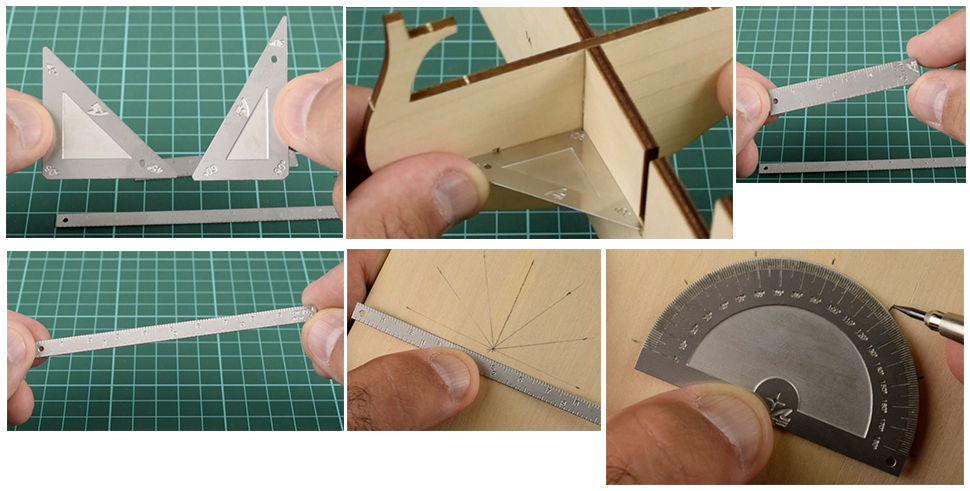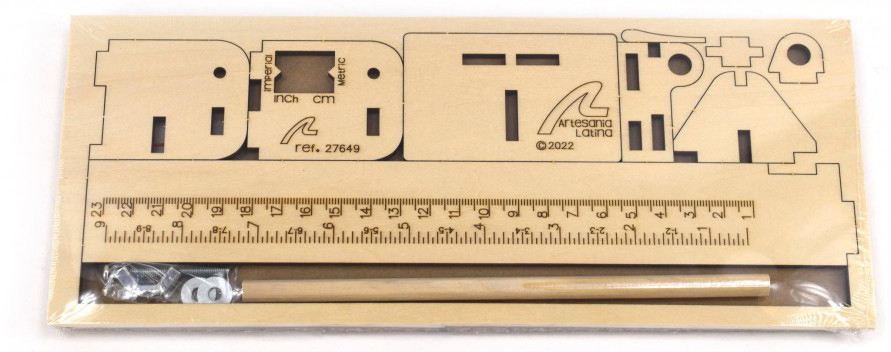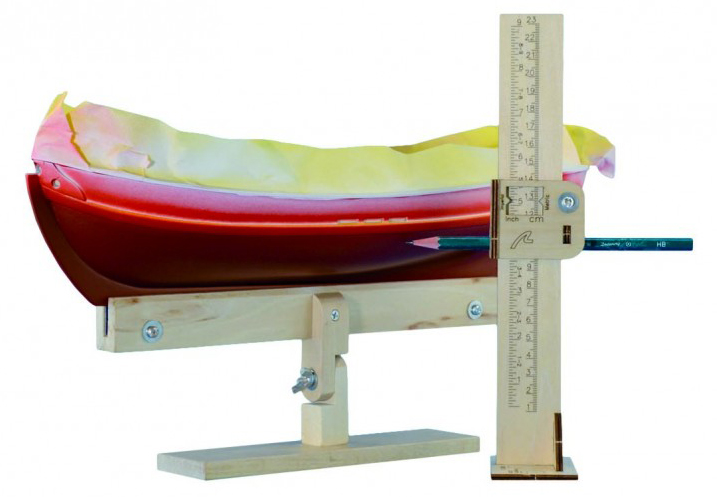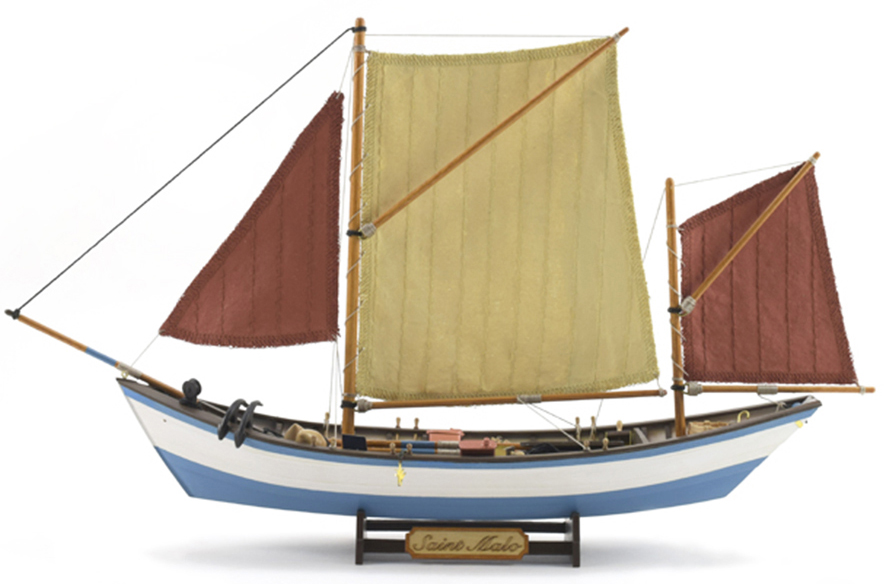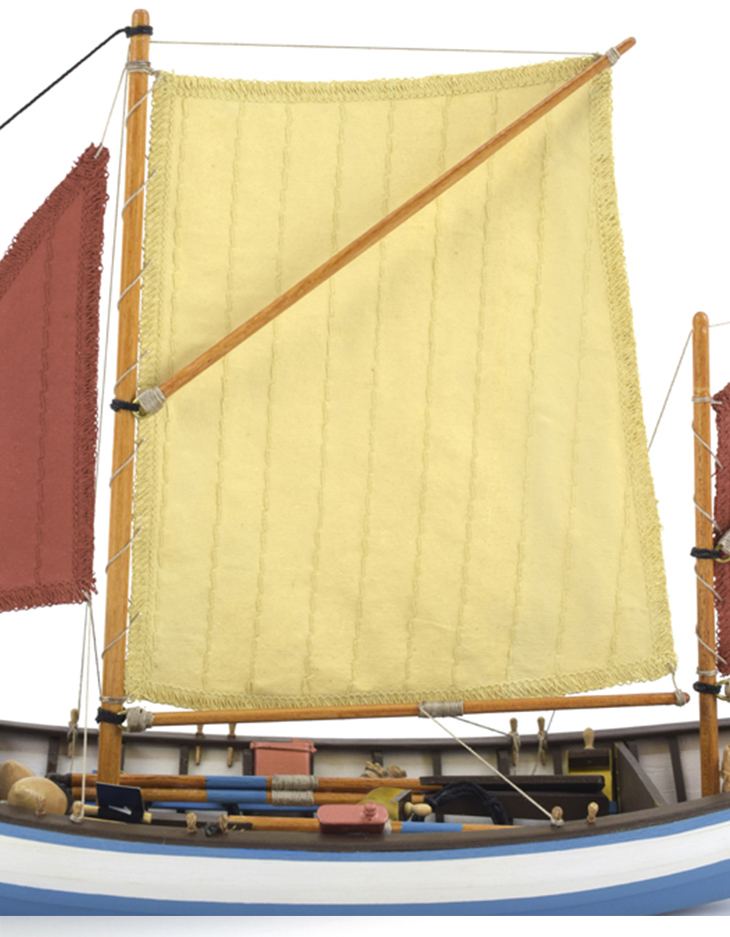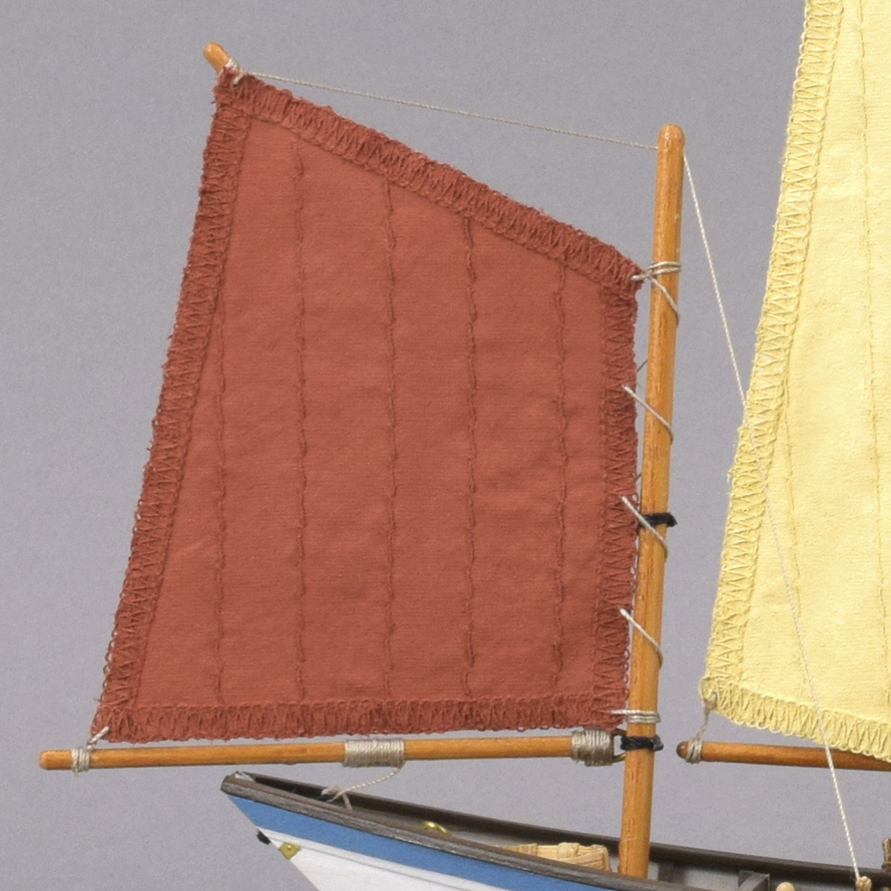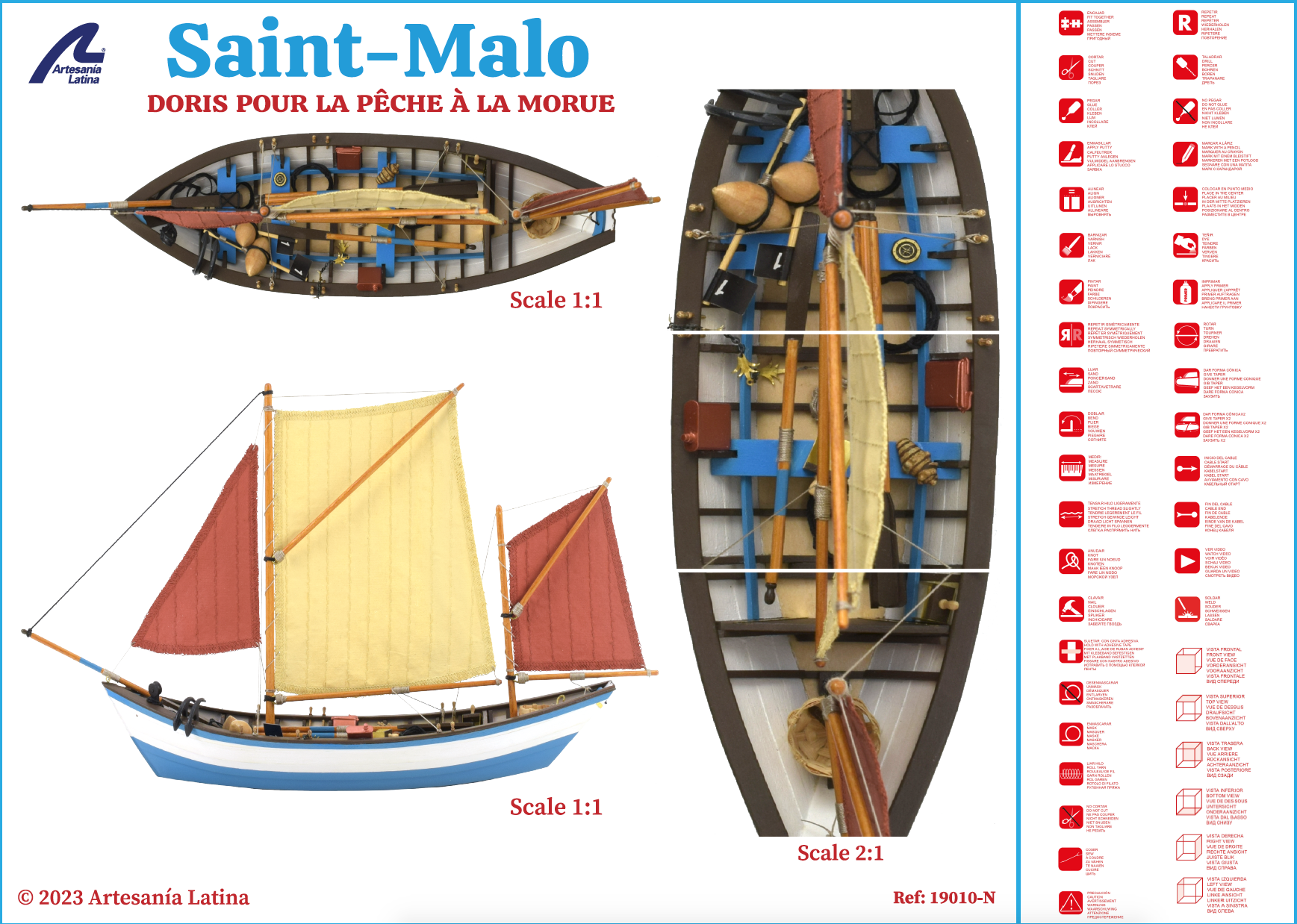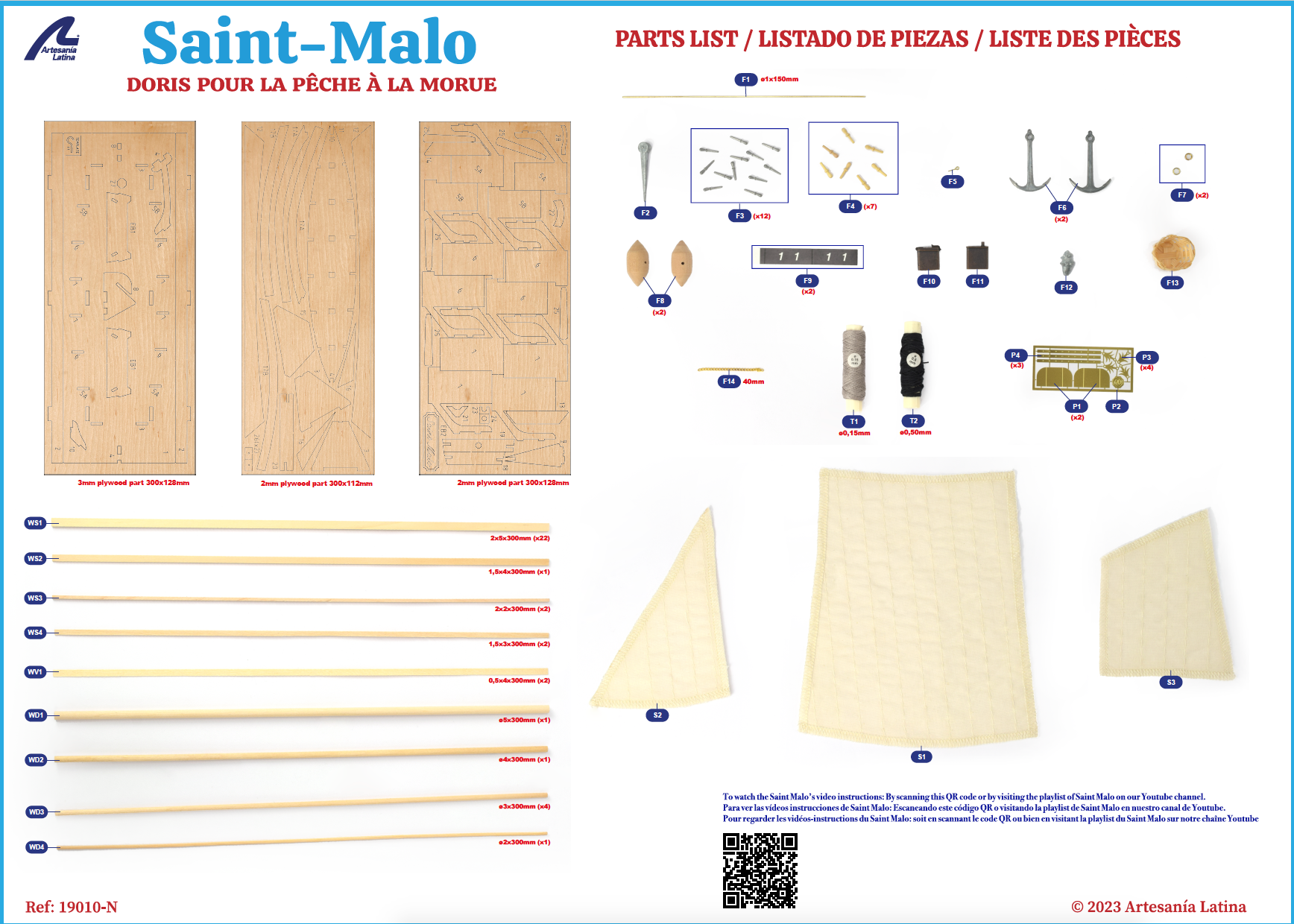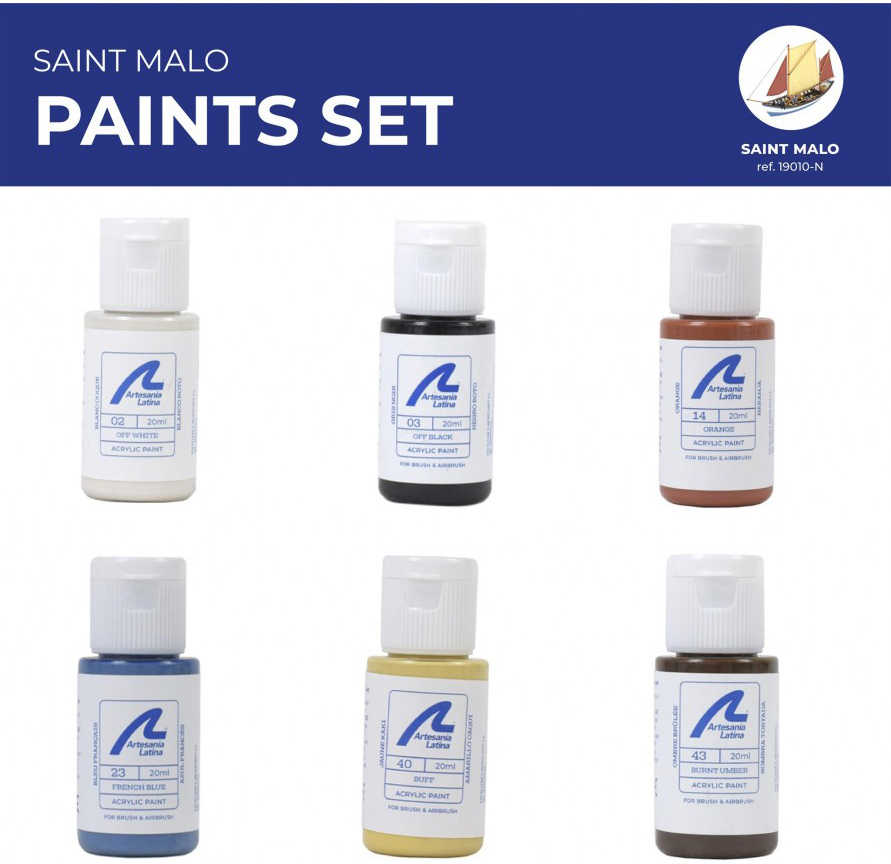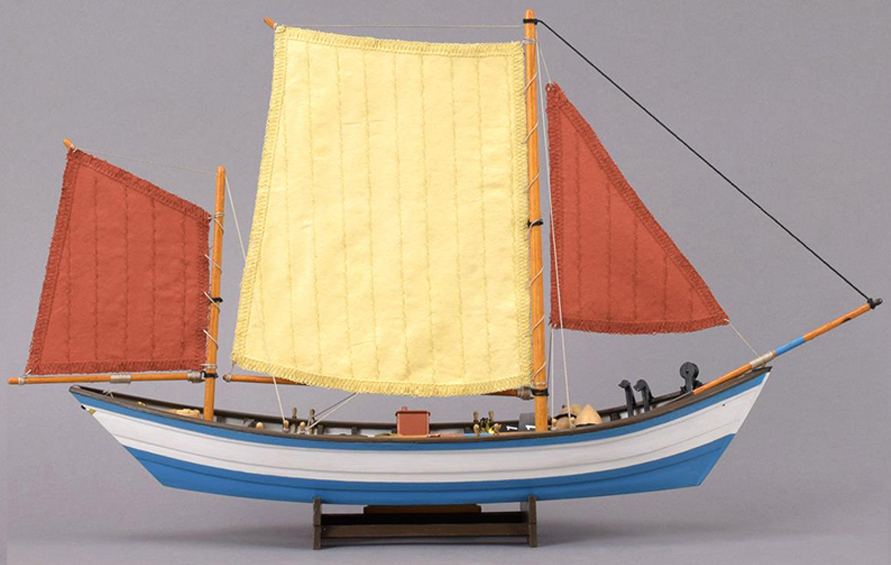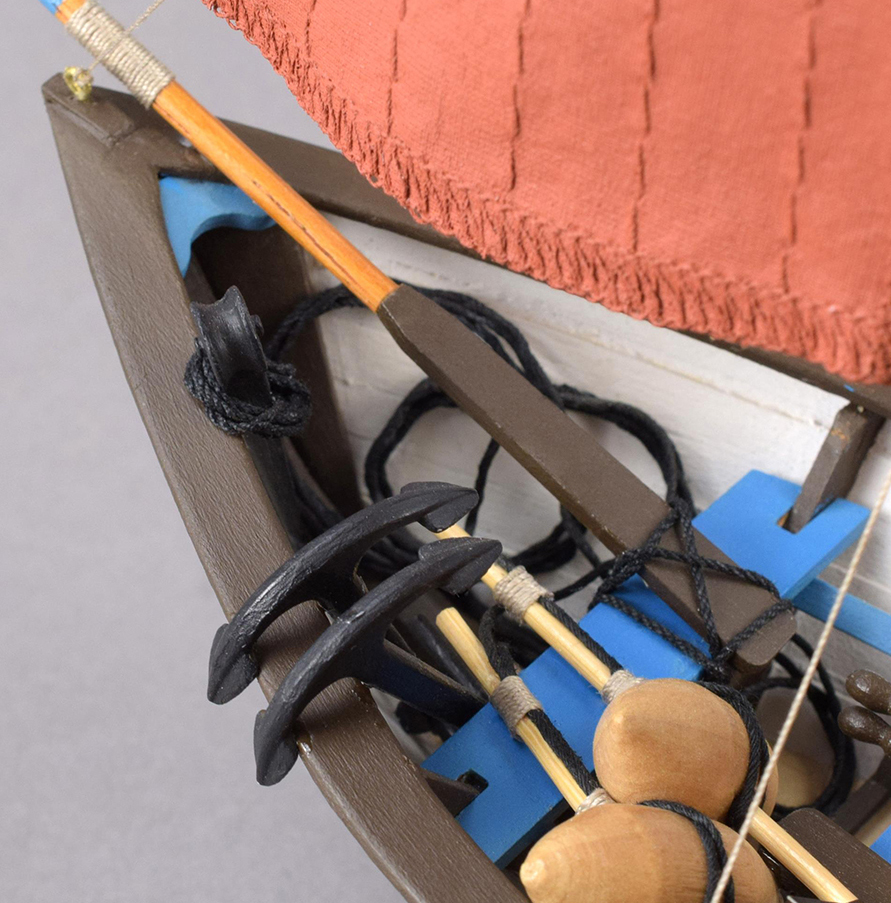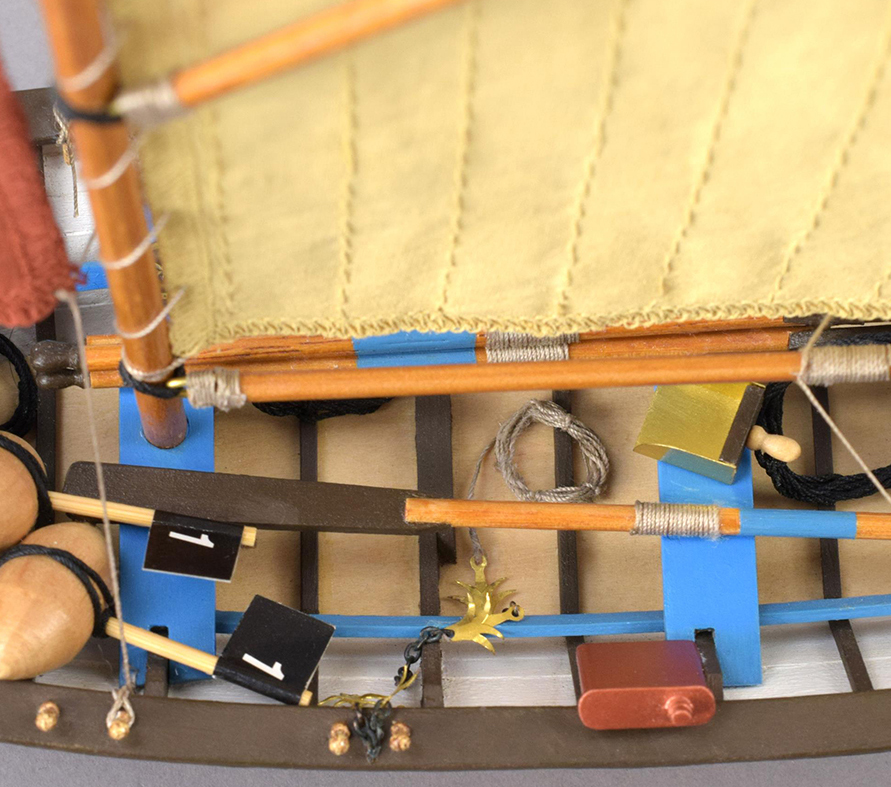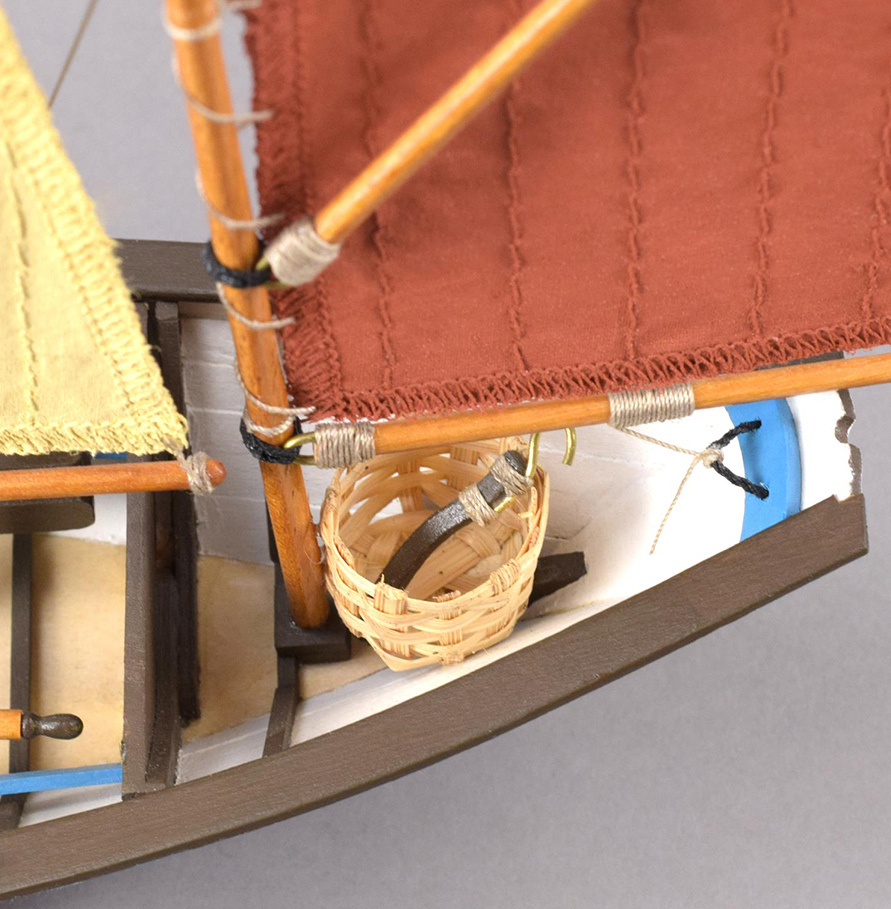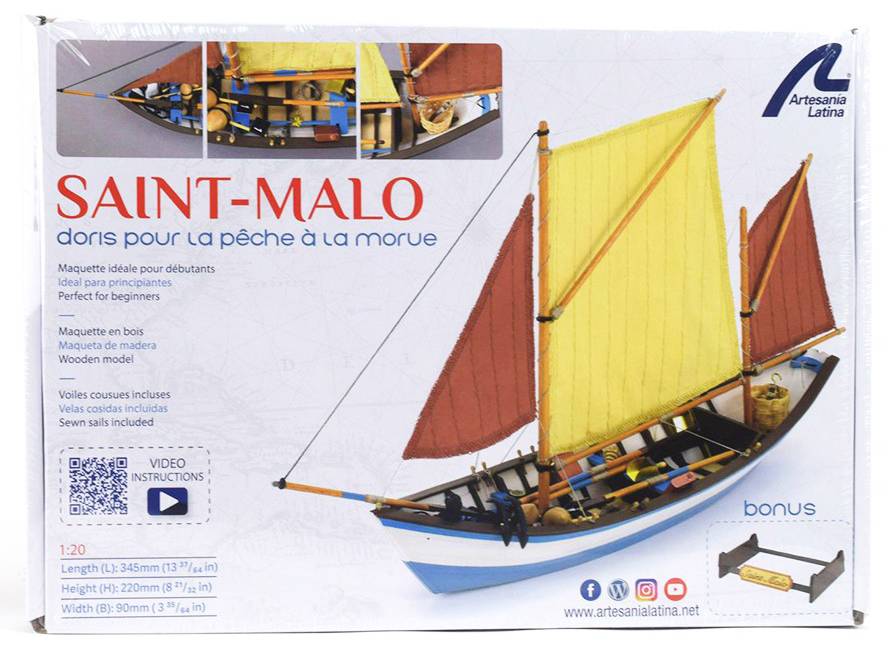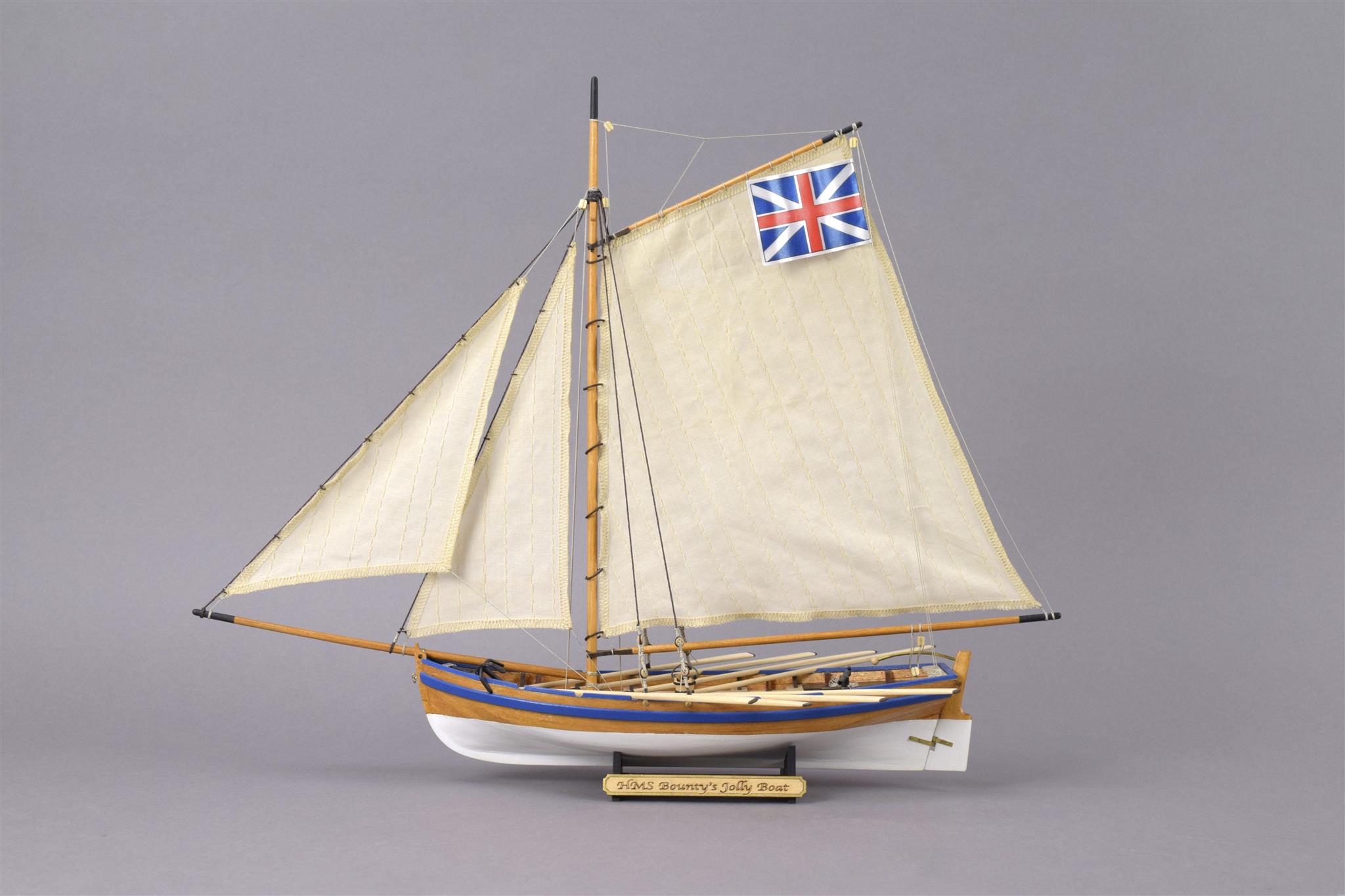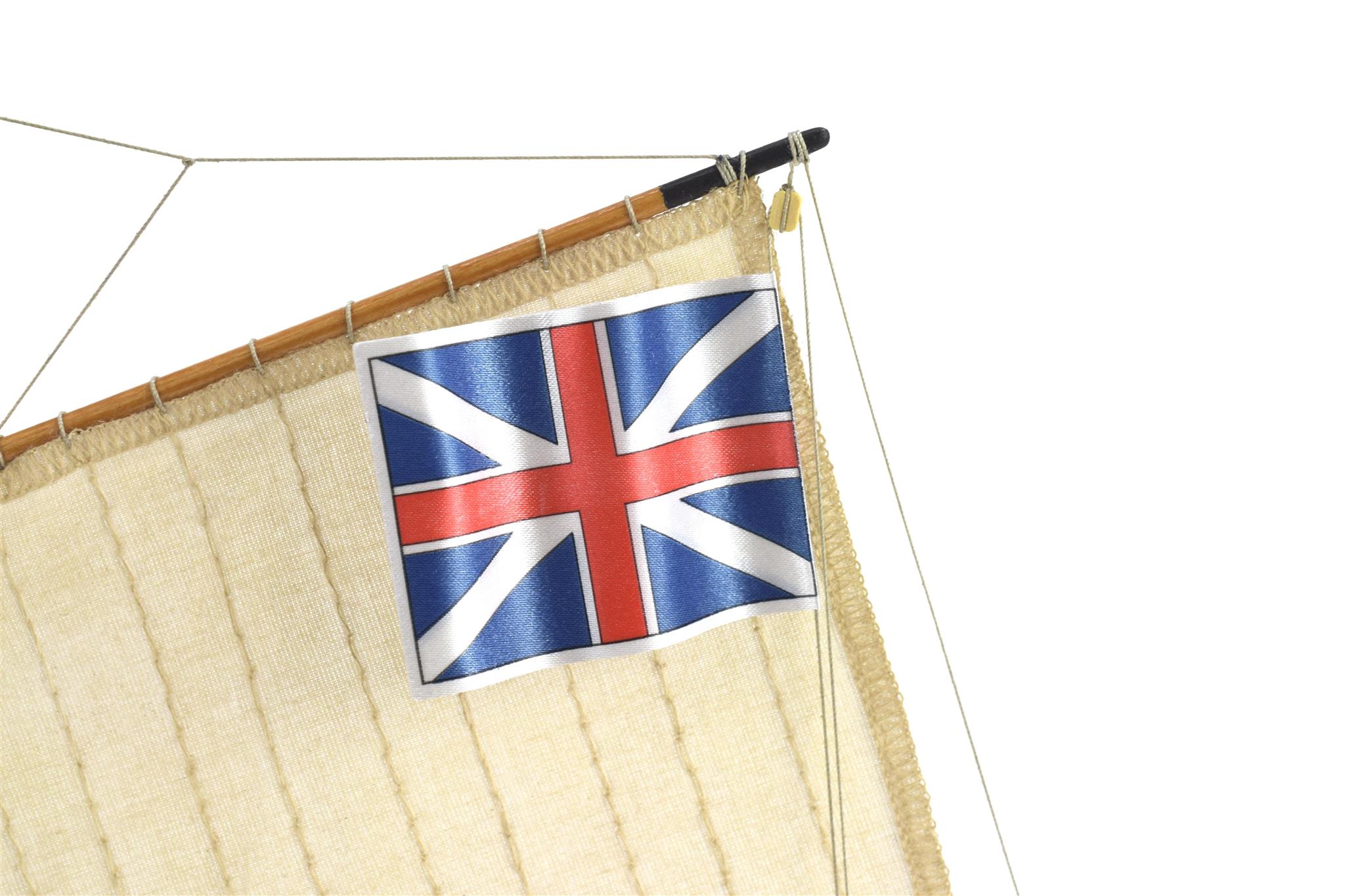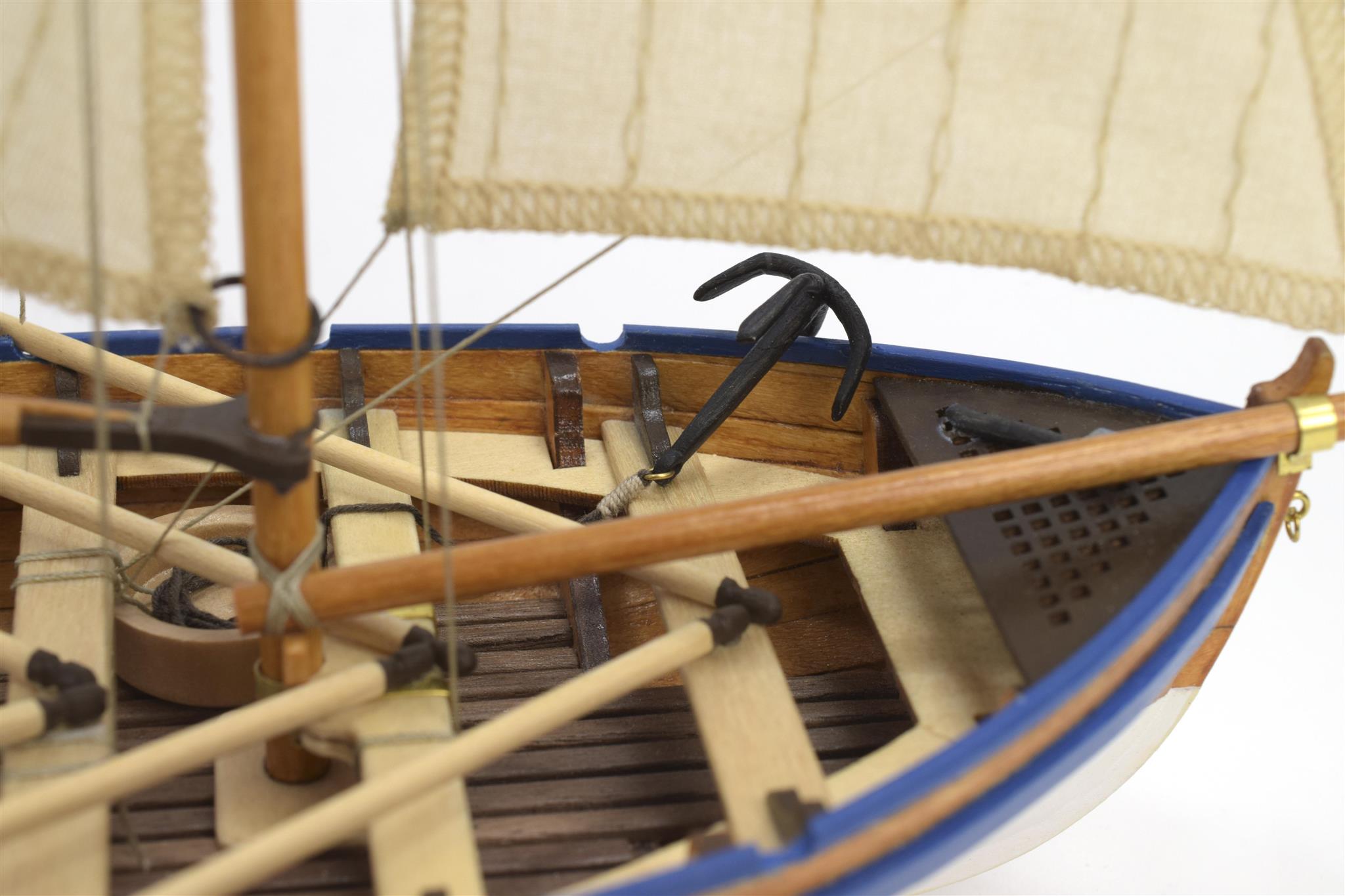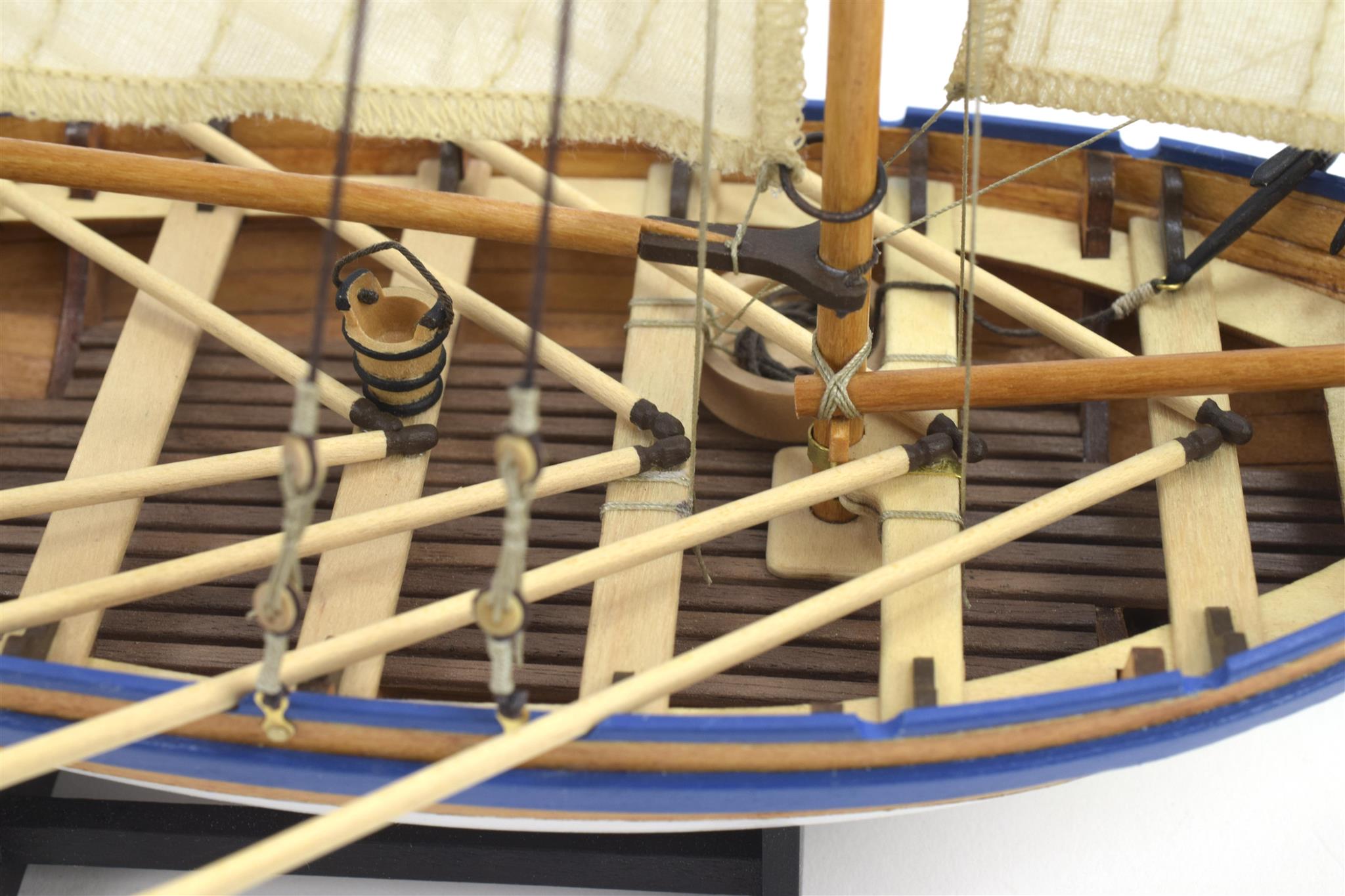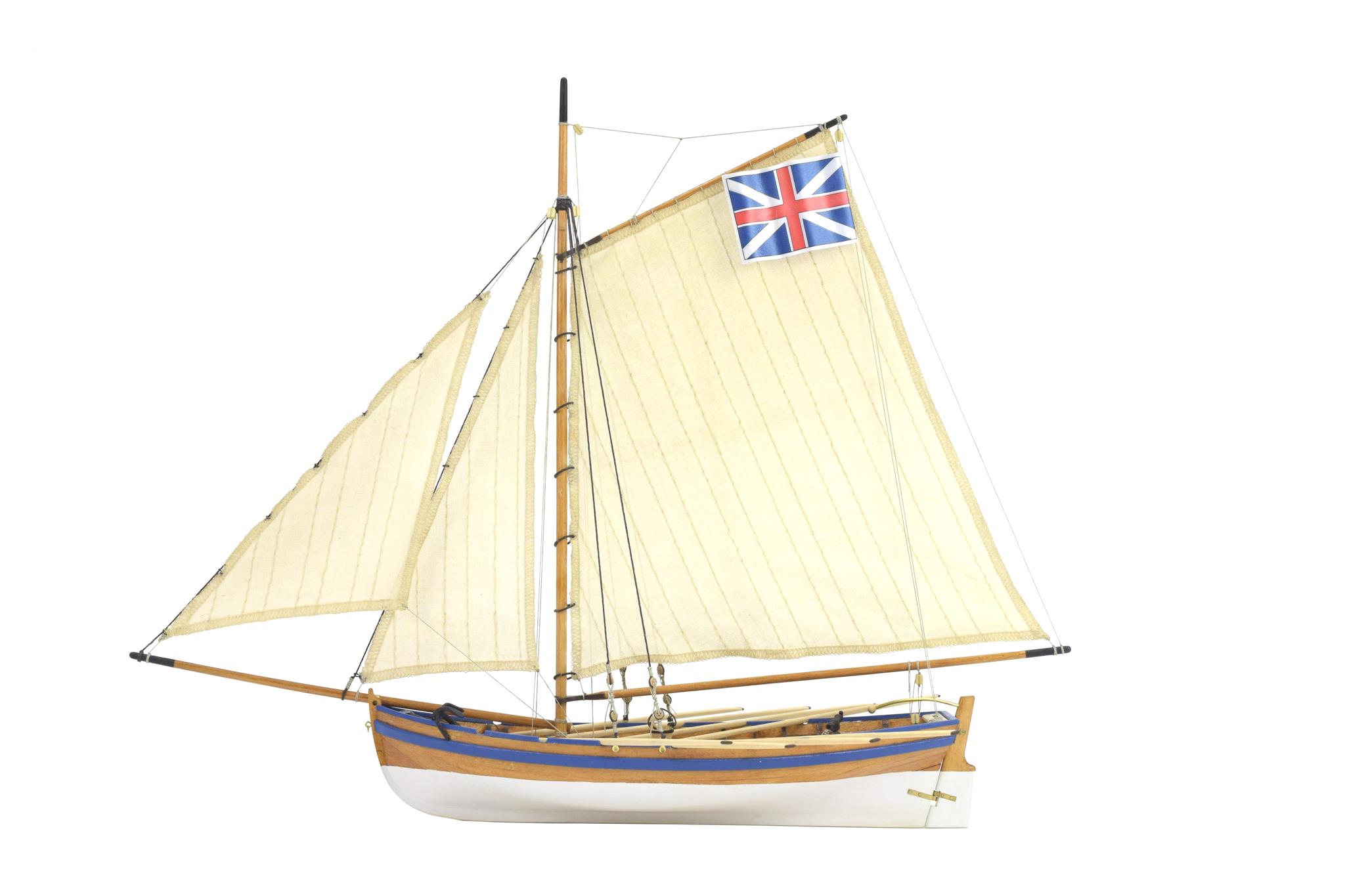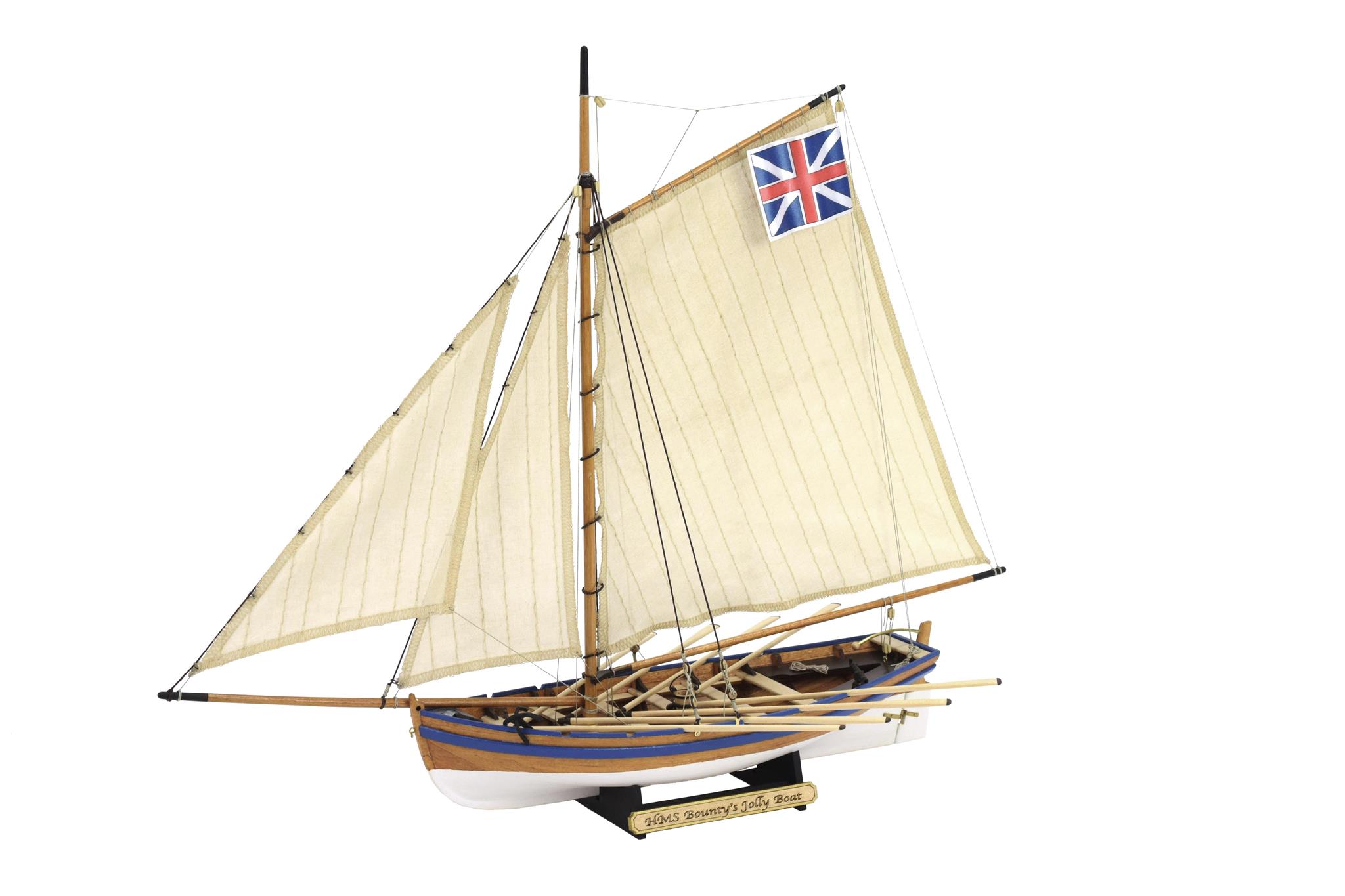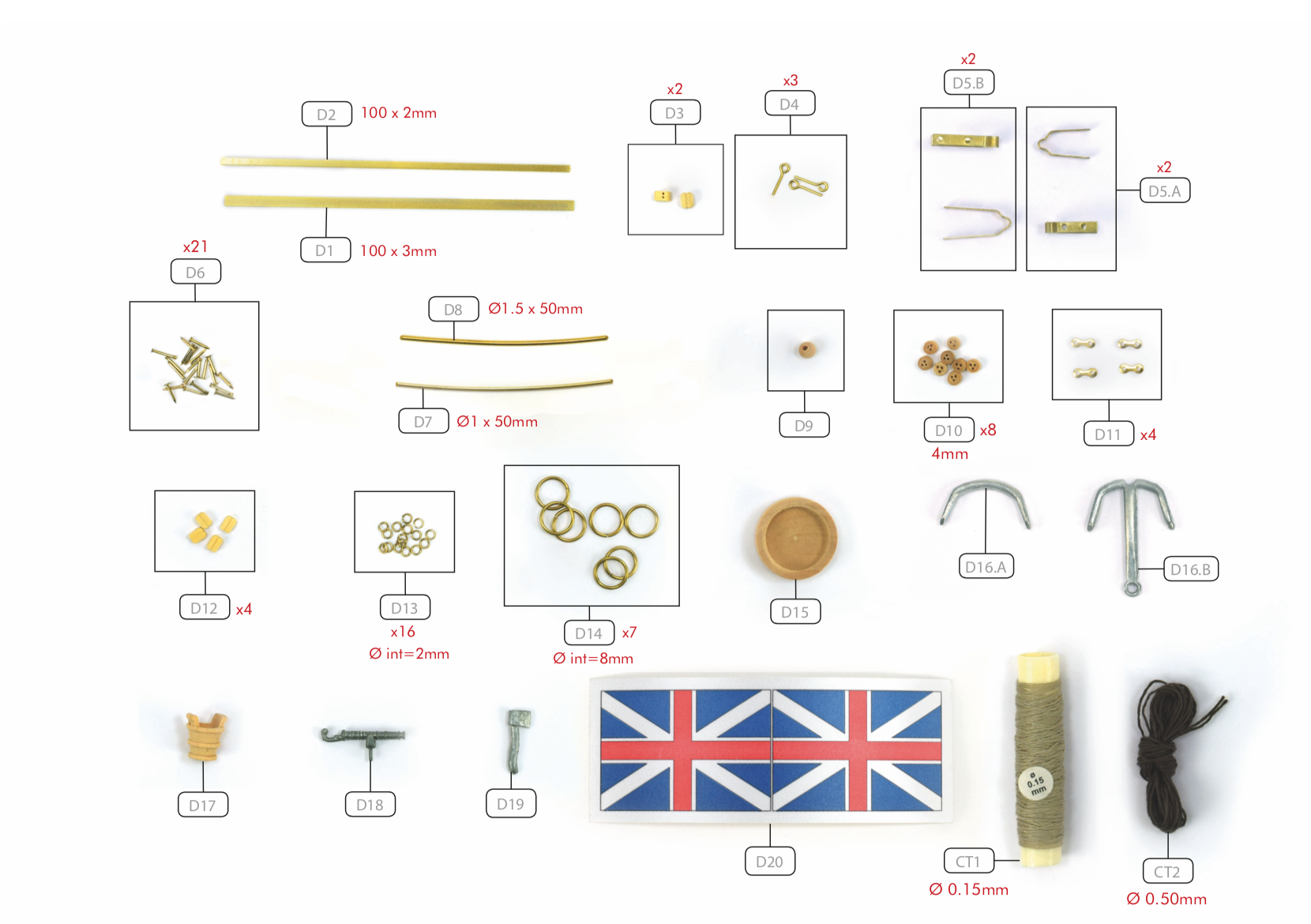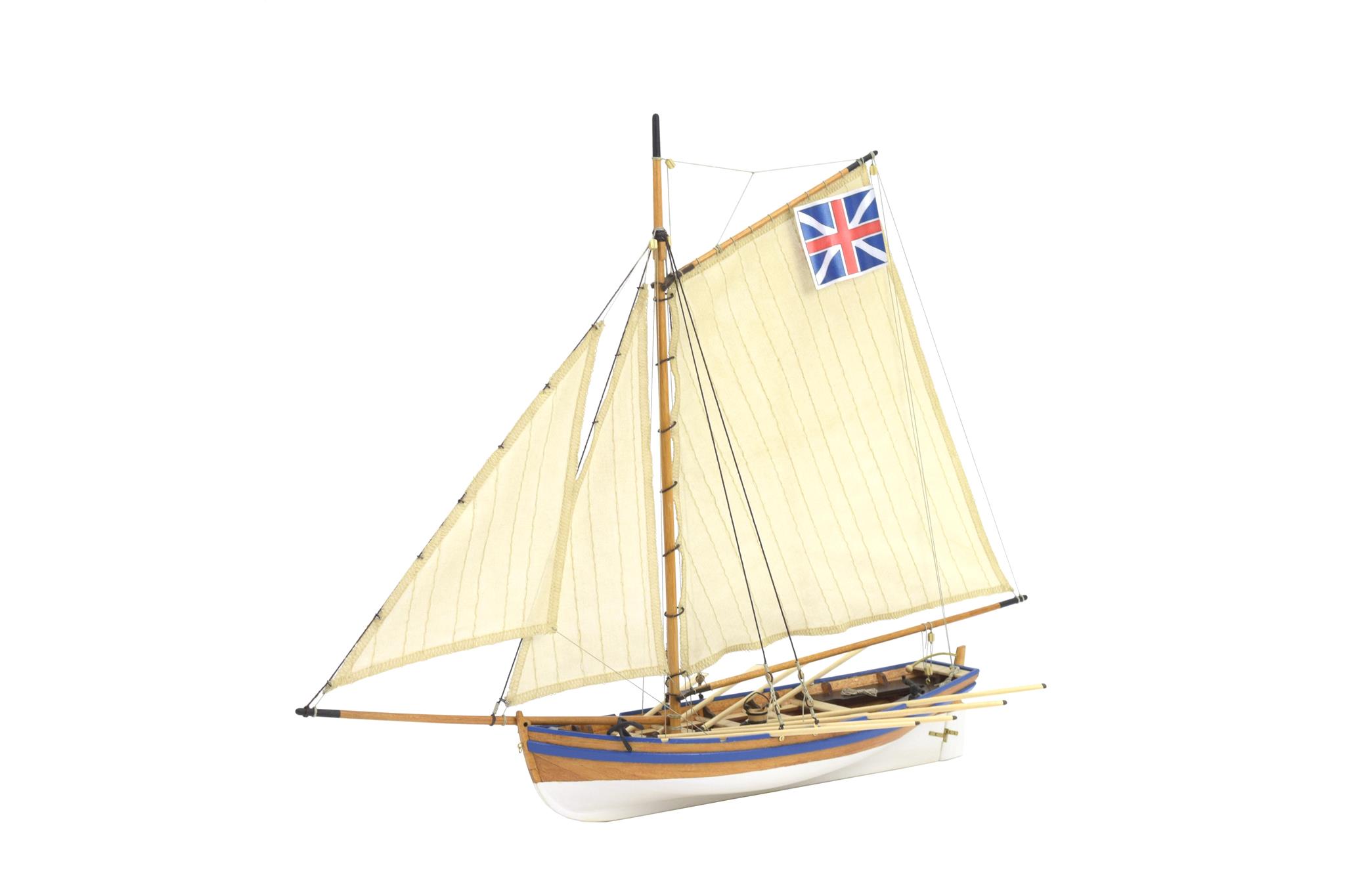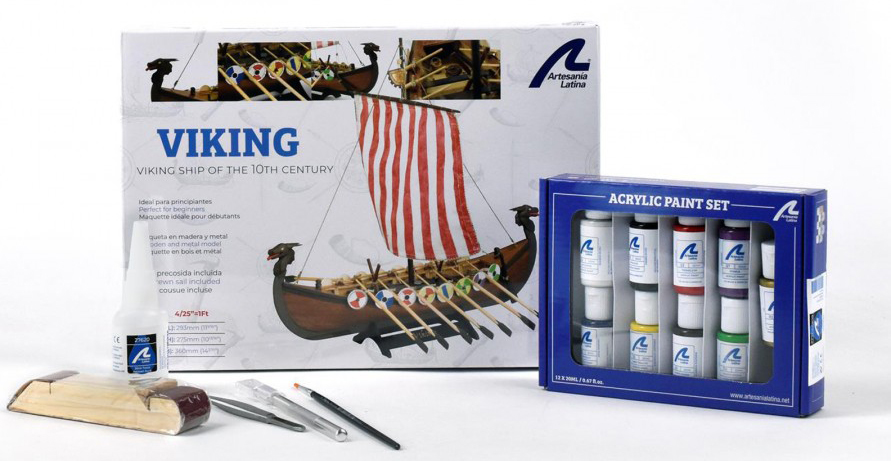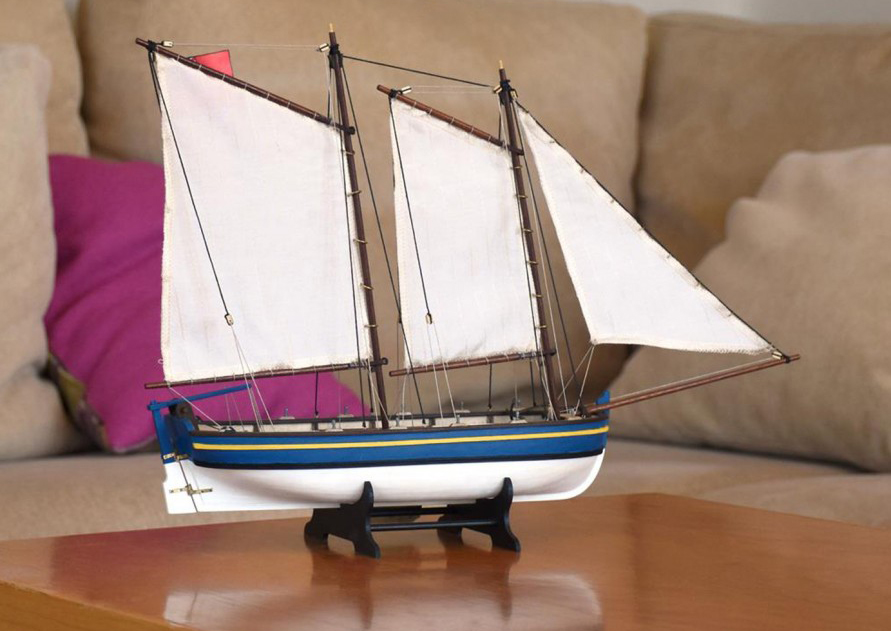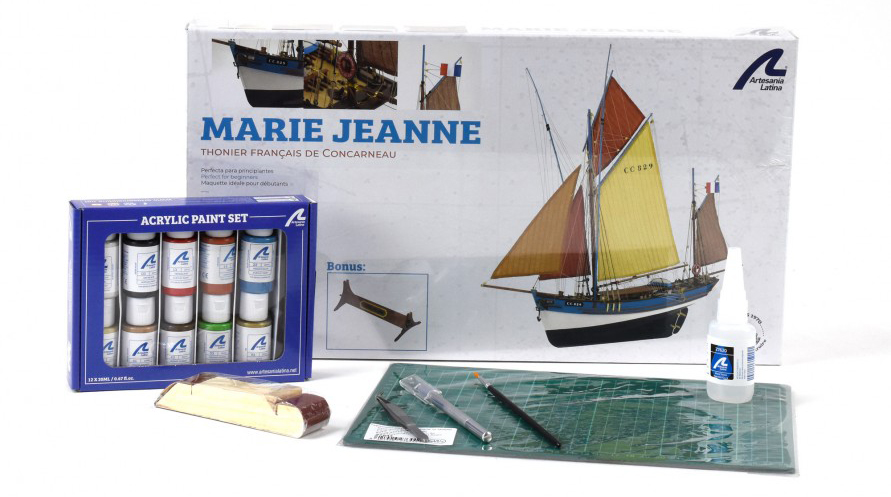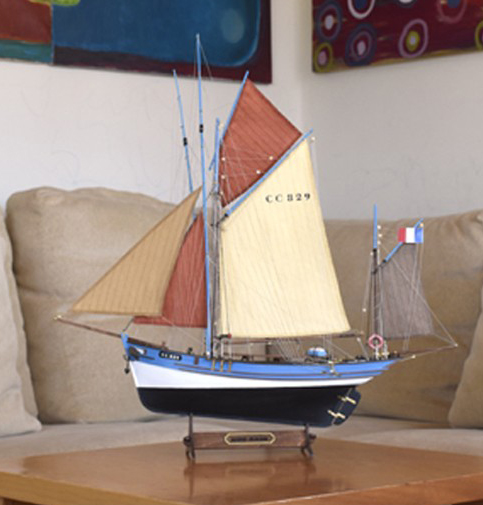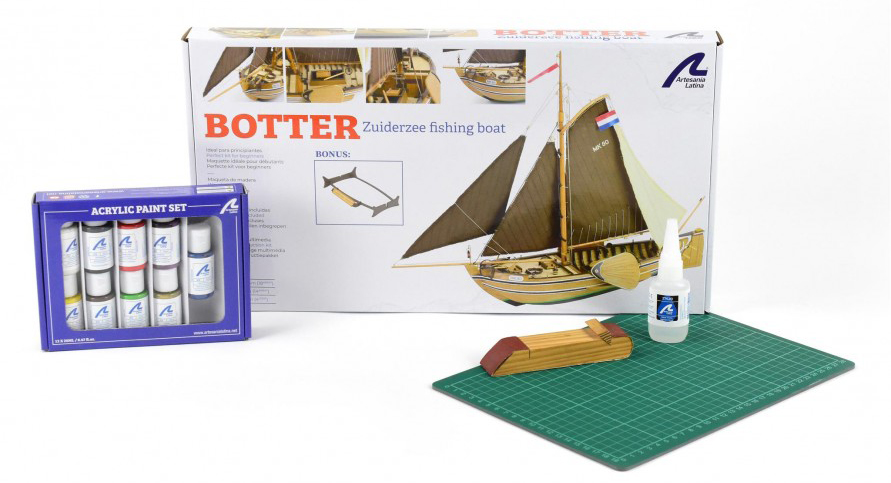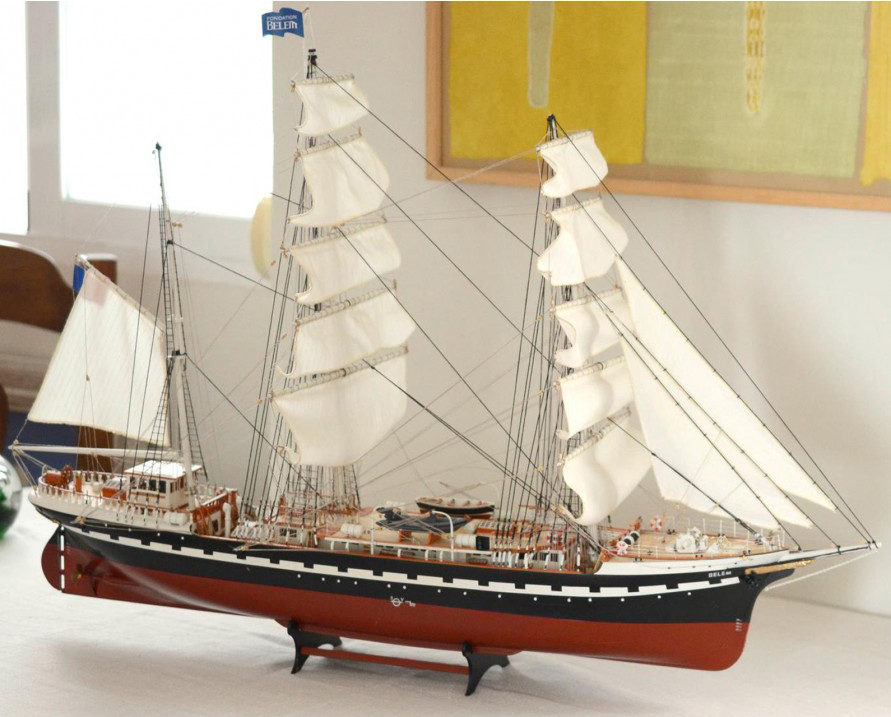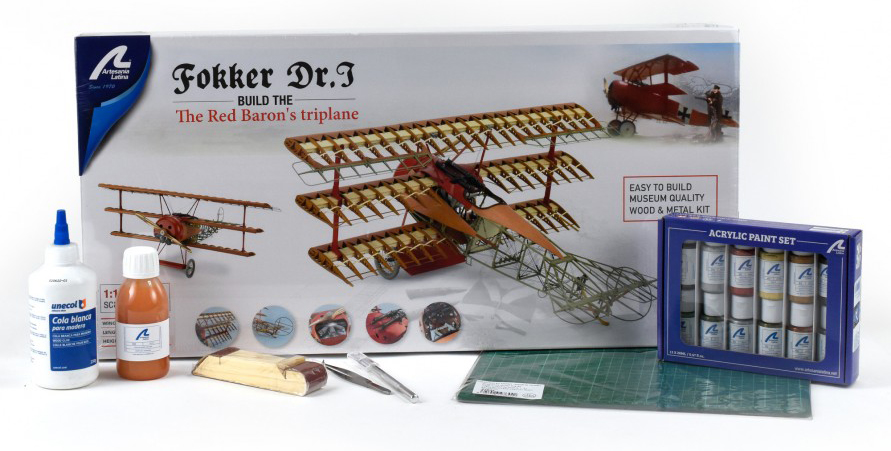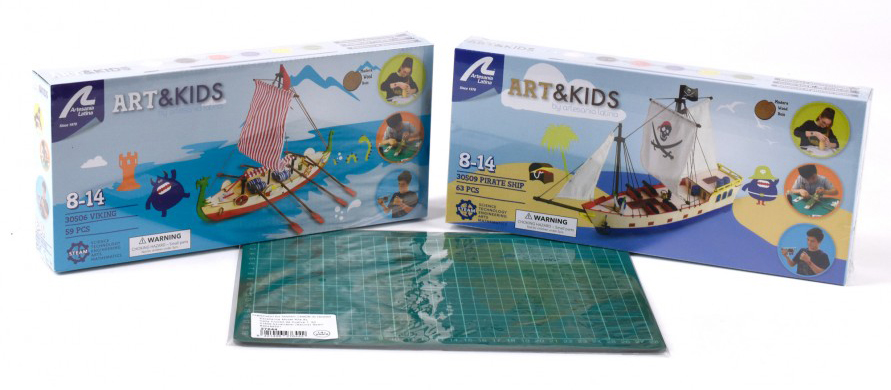Saying its nickname, any naval modeler and lover of historical ships is enthralled: ‘The Frigate of Liberty’. Yes, we are talking about the French ship Hermione La Fayette from the 18th century. And its spectacular 1:89 scale wooden model (22517-N) for advanced modelers. But, on this post of Artesanía Latina blog, we intend to show the reader the enormous relevance in history that this beautiful French sailboat had, the chronicle of frigate Hermione La Fayette. Hence, its miniature buildable model is essential in the collection of any lover of naval modeling.

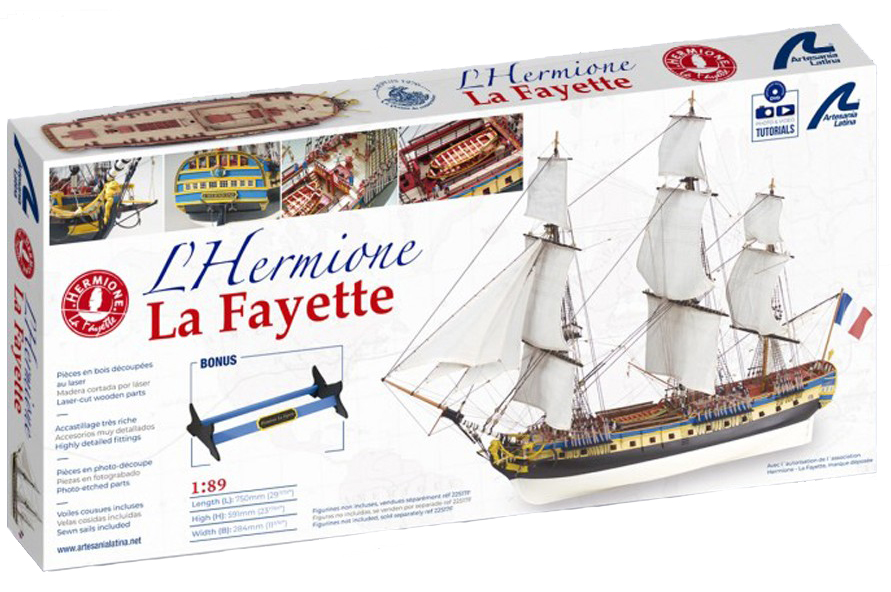
HISTORICAL CONTEXT BEFORE BUILDING THE FRIGATE HERMIONE LA FAYETTE
Last quarter of the 18th century, there is a great rivalry between France, England and Holland to gain control of different parts of the globe. When the different European nations fought for more power. At this time, France once again manages to have a worthy fleet in its fight against the British Royal Navy for the well-known colonies and for the money they bring to the coffers of the European states.
In this sense, the ‘New Continent’ sees how revolts begin to occur in its North American colonies, a fact that France intends to take advantage of to take revenge on the British… And they will achieve this thanks to the frigate Hermione La Fayette and many other vessels that are built at the Rochefort arsenal! Precisely, the construction of the frigate occurred in a golden stage in which the French fleet achieved very relevant victories, such as the one that occurred in the United States War of Independence. France supports the American insurgents, who are continually ‘looted’ by taxes by England. And Hermione La Fayette participates fully in helping them.
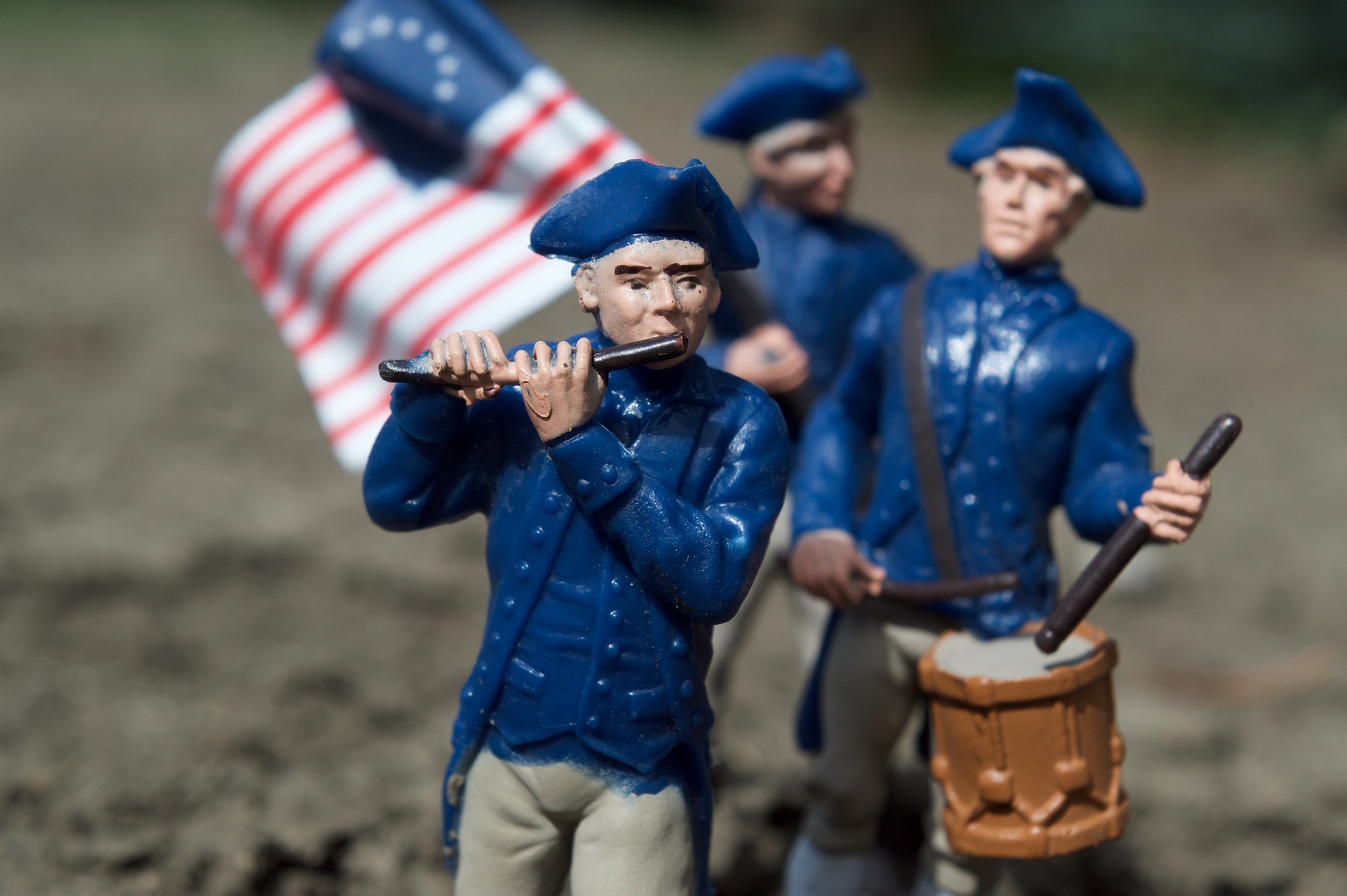
On July 4th, 1776, the Declaration of Independence was written. Congress defends what has been achieved with the support of the French country, so representatives of the American Chamber visit Europe to gather weapons and to convince the authorities to have French officers fight with them. France not only accepted this in February of 1778, but also the following month declared war on England. And a 20-year-old young man has a lot to do with this Franco-American commitment. Gilbert du Motier, the marquis of La Fayette. This is the one who convinces King Louis XVI to support the Americans.

CHRONICLE FRIGATE HERMIONE LA FAYETTE: CONSTRUCTION
The chronicle of the frigate Hermione La Fayette continues with the beginning of its construction. The French minister De Sartine proposed its creation and the Council of the Port of Rochefort approved it in November 1778. Order was given to naval engineer Pierre Chevillard Sr., who, in addition to the Hermione La Fayette, also directed the construction of another frigate, the Fée. To do this, it is based on the plans of two other vessels: Courageuse and Concorde, the first two of these four frigates.

At this point, the construction was fired, which took place on the right bank of the Charente River, within the same arsenal, in December 1778. This incredible speed in assembling the sailboat is obviously due to the demand for help in the War of Independence, but it also has other factors that help achieve this speed never seen before.
Firstly, because the theoretical and practical basis in naval engineering is already available. Secondly, because of the huge workforce that is used. And thirdly, because they have the materials where they work. On this chronicle of the frigate Hermione La Fayette, it should be noted that hundreds of carpenters, blacksmiths and all types of professionals – without forgetting prisoners – are involved in its assembly so that the ship can be launched in minimal time.
CHRONICLE FRIGATE HERMIONE LA FAYETTE: CHARACTERISTICS
Hermione La Fayette is a frigate, it is a light, fast and very maneuverable ship. It is unbeatable. Its dimensions? 66 meters in length and 11.5 meters in width. Speaking of its mast, it has three vertical masts with modular dimensions and a sail of up to 3,300 square meters. Without forgetting its complex rig of 26 kilometers of rigging that requires between 250 and 300 crew members. Regarding its weapons potential, it has 32 cannons. 26 units of 12-pounder guns on the battery deck and 6 units of 6-pounder guns on the castle deck.
To provide it with extra speed, in January 1780, the hull of the Hermione La Fayette was covered in copper with 1,100 sheets of metal. Thus, the hull is protected from mollusks and algae.

INITIAL TEST IN THE GULF OF BIZCAYA AND FIRST STEPS IN AMERICA
The Bay of Biscay is the first place where it is destined, here the chronicle of the frigate Hermione La Fayette continues before its American campaign. During half a year of 1779, the commander La Touche Tréville intends to check the conditions under which the ship sails. To do this, it also recruits 292 people as a crew. Objective of this first mission? Monitor and protect the coasts of the aforementioned gulf and the English Channel where trade is continuous. The Gauls capture six English ships.
Next, in March 1780, Hermione La Fayette began her journey in the War of Independence with 316 crew members. It leaves from the port of Rochefort with the Marquis de La Fayette who is in charge of a secret mission. Meet George Washington in Boston and support him economically and militarily. The French watched the North American coastline and fought against English frigates for almost two years through campaigns to protect allied trade and attack the enemy.
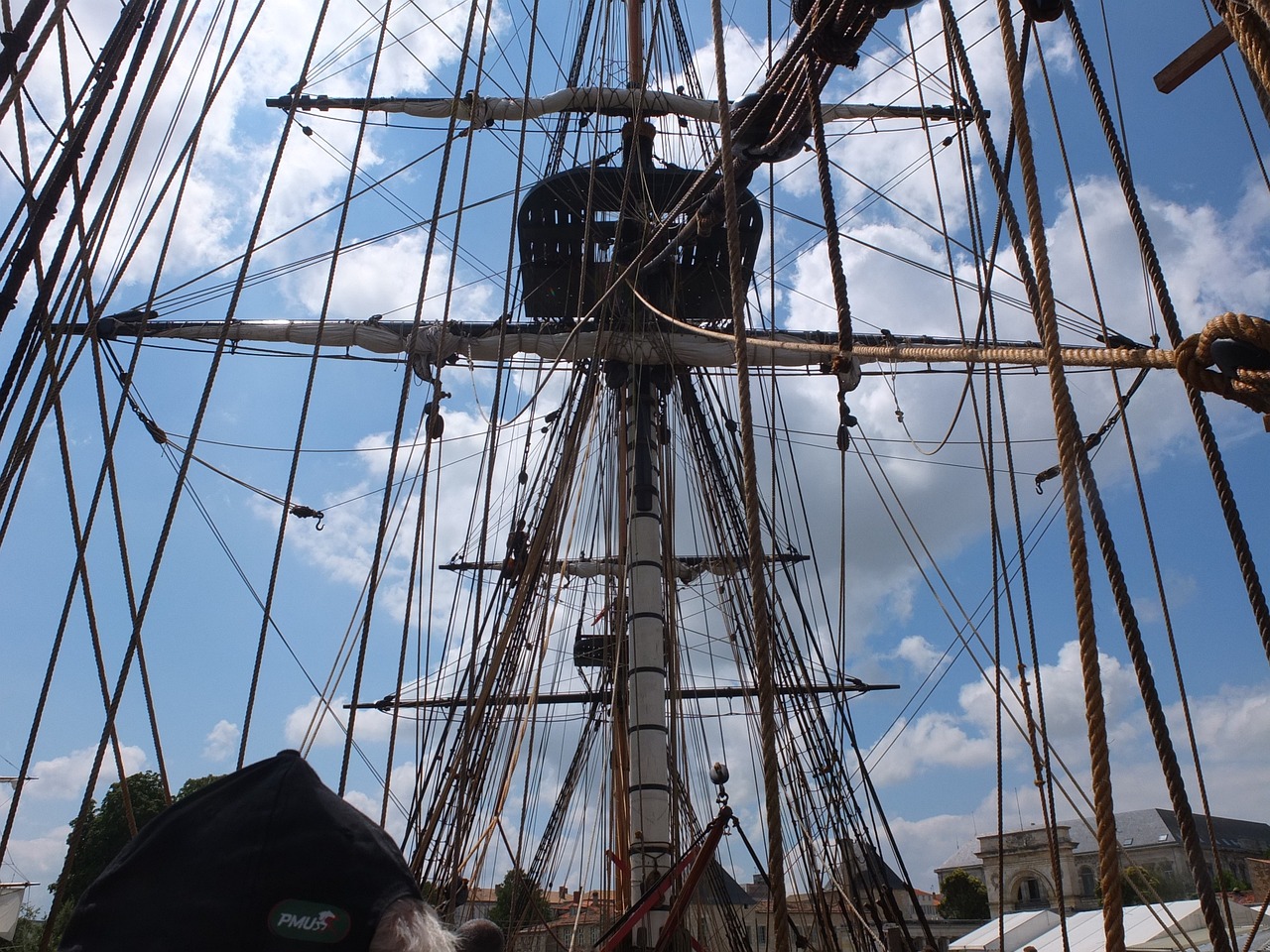
In June 1780 one of the most notable battles occurred in the chronicle of the frigate Hermione La Fayette. This is because it fights against four English ships, among which is the frigate Iris. From the French ship its cannons and 1,250 rifles and blunderbusses are fired 260 times. 10 men die and 37 are injured, including the commander and his assistant. A month later, in Newport, the 5,500 men of the Count of Rochambeau’s expeditionary force disembark. This is sent by Louis XVI from the town of Brest to support the American insurgents.
CHRONICLE FRIGATE HERMIONE LA FAYETTE: VICTORY IN YORKTOWN AND RETURN
In May 1781, the reception of the United States Congress and the Council of State of Pennsylvania takes place aboard Hermione La Fayette. An official dinner is held there in the presence of the Marquis de La Fayette and Samuel Huntington, president of the Congress. This meeting is a definitive test of the friendship between the two countries.
Two months later, on the coast of Île Royale, the frigates Hermione and Astrée encounter a convoy escorted by six English ships, which they attack. It is the naval battle of Louisbourg, in which two English ships finally lower their flag. The material damage is extensive, especially to the rigging, and Hermione records twenty-two victims. This confrontation is captured by the frigate’s auxiliary lieutenant Mullon, present on board, and later painted by Auguste-Louis de Rossel de Cercy.

The frigate Hermione La Fayette has to go through a ‘workshop’ until September 10th, so it remains in Boston to fix all its damage. It gives him time, however, to participate in the siege of Yorktown in October 1781. This battle pits the allies, with the Count of Rochambeau at the forefront, against the English, led by Lord Cornwallis. After three weeks of dispute, the latter surrenders, with a quarter of the British forces fighting in the war. The victory at Yorktown led to the consequent Treaty of Versailles, which was signed in 1783, and the independence of the thirteen British colonies, which became the United States of America.

After this achievement, the chronicle of the frigate Hermione La Fayette in America closes. First, by setting sail on February 2nd from the United States and, second, by dropping anchor in the French harbor of Basques twenty-three days later.
EASY KIT HERMIONE LA FAYETTE: FOR BEGINNING MODELERS
In addition to the model for advanced modelers, Artesanía Latina has created recently the range Easy Kit with Hermione La Fayette (17000) in this one. A model intended for those who are starting out on naval modeling or, simply, for those who want to build it.
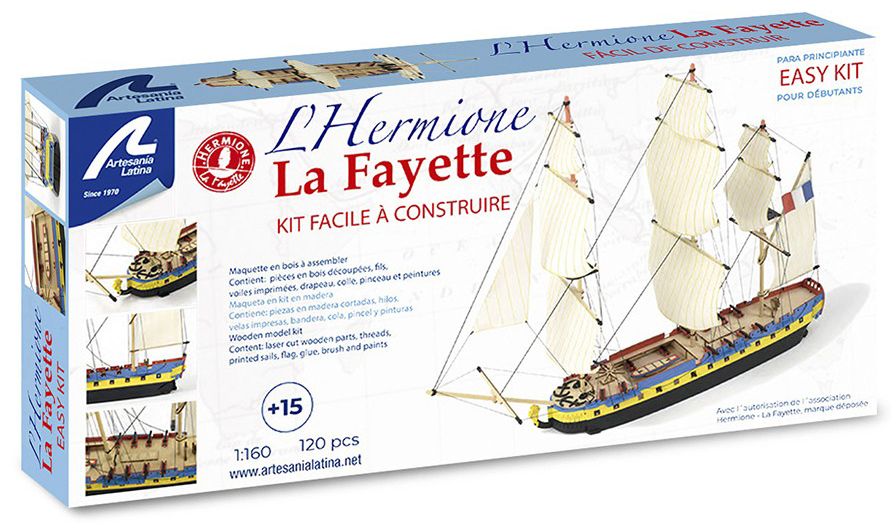
Read the second part of the post…

